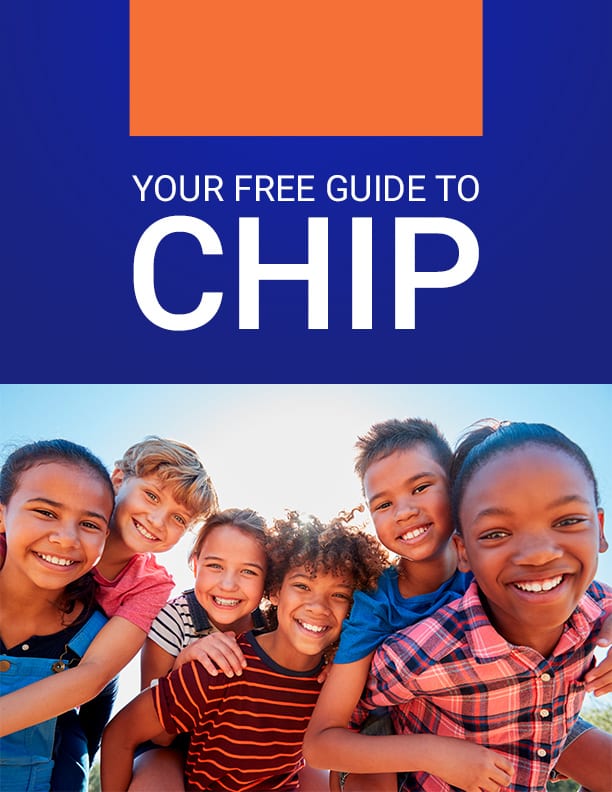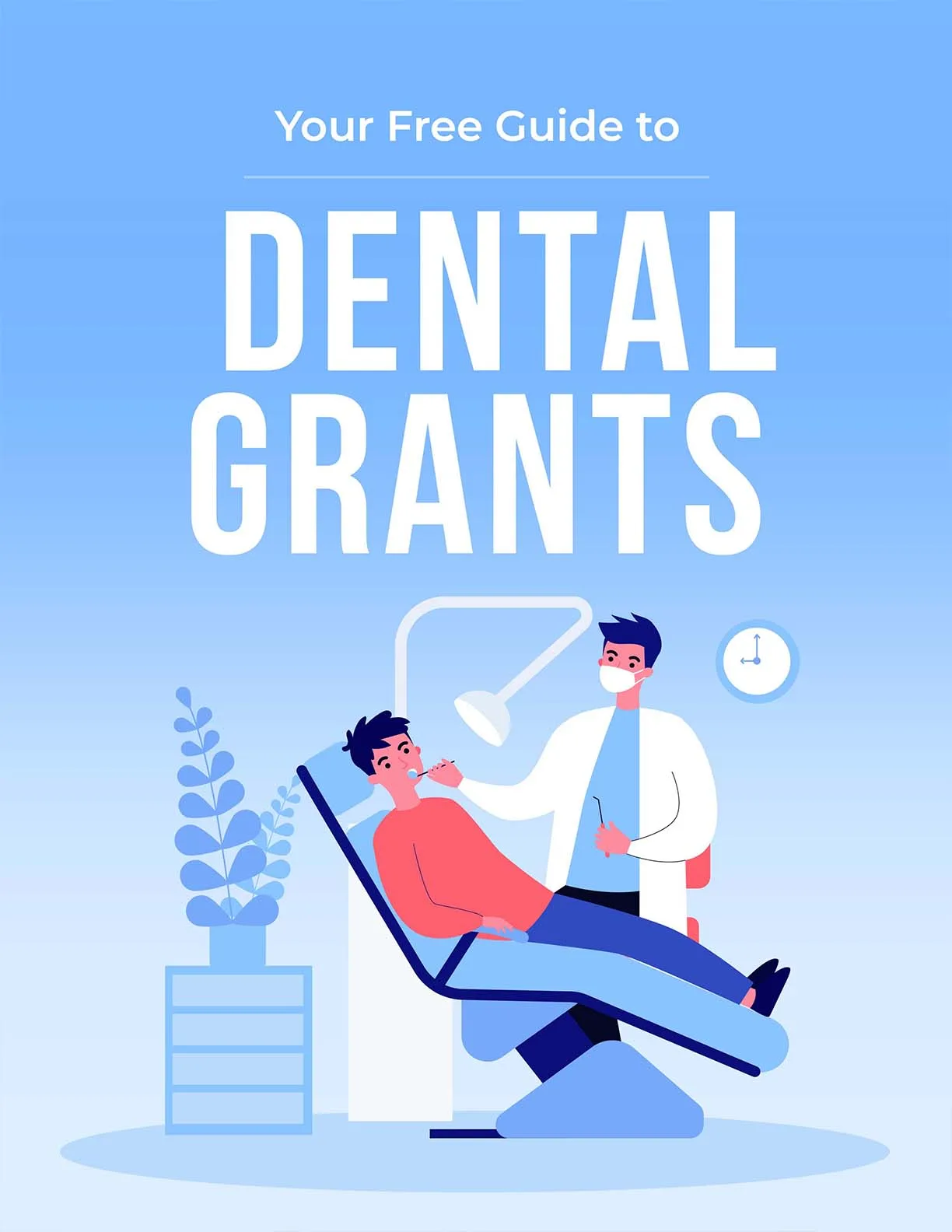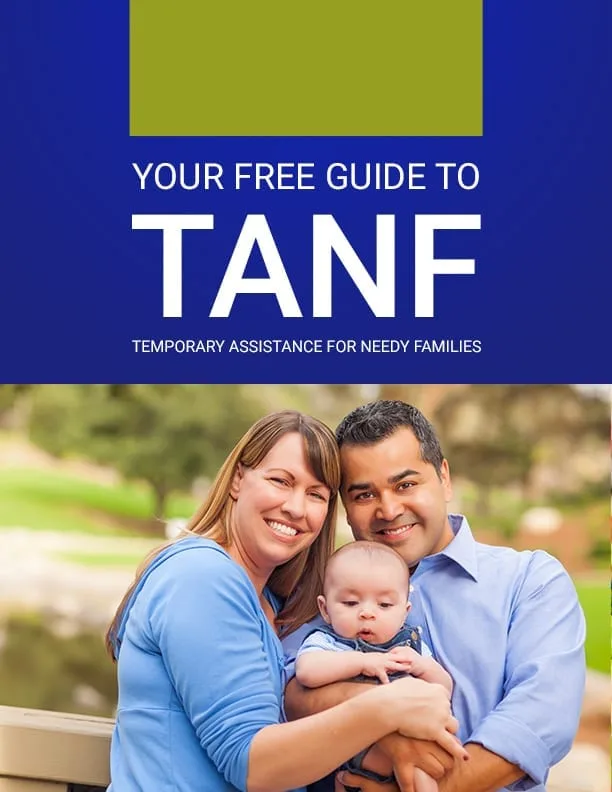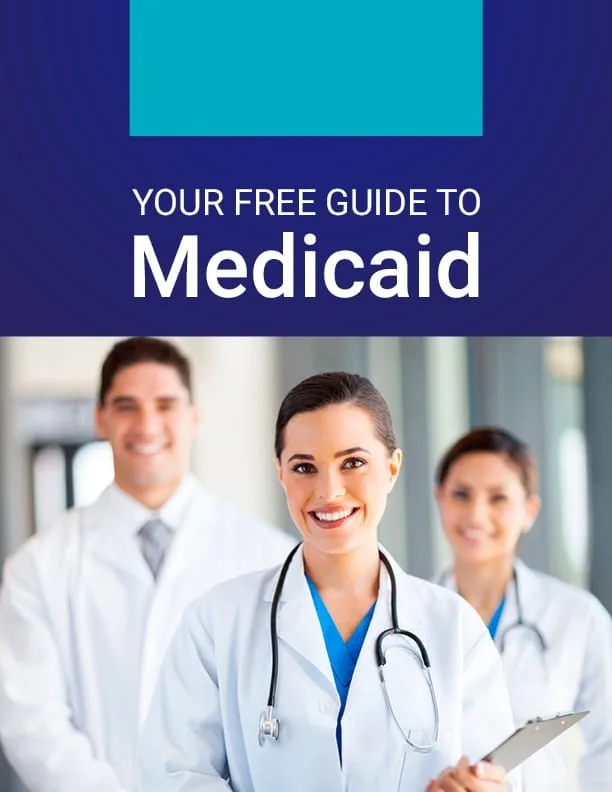Your Free Guide to CHIP
Your Free Guide to CHIP
We are privately owned and not affiliated with the government in any way or form.

CHIP 101
The Children’s Health Insurance Program (CHIP) provides low-cost healthcare coverage to millions of families in the United States. Through CHIP, parents and guardians can obtain important insurance benefits for their children. Benefits cover annual check-ups, hospital visits, and other medical needs which will be explored in this guide.
Any child who qualifies for CHIP is also automatically eligible for CHIP dental and vision insurance. In some cases, pregnant women may also be eligible for CHIP health care benefits. All CHIP services are provided through CHIP-participating providers. Not all doctors and medical facilities accept CHIP patients. Enrollees must only receive care from doctors who participate in the CHIP program.

Eligibility for CHIP is based on factors like family income, household size and age. Income limits are determined by each state or territory using a uniform set of standards based on Modified Adjusted Gross income (MAGI), which takes into account certain deductions like student loan interest deductions.
CHIP is a federal program that is administered through location-specific CHIP programs. Anyone interested in receiving CHIP benefits can apply through their state’s specific CHIP program or through the national Health Insurance Marketplace. The application process requires individuals to provide personal information including tax information, income information and identification. If approved, beneficiaries will receive a CHIP enrollment card to access their health care benefits. If CHIP coverage is denied, applicants can request an appeal.
CHIP and Medicaid
Often confused for one another, CHIP and Medicaid are both federally funded healthcare programs. However, they have distinct differences in eligibility, coverage options and funding.
Both CHIP and Medicaid provide health coverage and services to children 18 years of age or younger. However, Medicaid has lower income limits, which means it is restricted to extremely low-income households.
Most states require individuals to earn somewhere at or below 138 percent of the FPL to qualify for Medicaid. The 2025 FPL chart for the 48 contiguous states and Washington, D.C. is as follows:
| Family Size | Annual Income Limit |
| 1 | $15,650 |
| 2 | $21,150 |
| 3 | $26,650 |
| 4 | $32,150 |
| 5 | $37,650 |
| 6 | $43,150 |
| 7 | $48,650 |
| 8 | $54,150 |
| For families/households with more than 8 persons, add $5,500 for each additional person. | |
The 2025 FPL chart for Alaska is as follows:
| Family Size | Annual Income Limit |
| 1 | $19,550 |
| 2 | $26,430 |
| 3 | $33,310 |
| 4 | $40,190 |
| 5 | $47,070 |
| 6 | $53,950 |
| 7 | $60,830 |
| 8 | $67,710 |
| For families/households with more than 8 persons, add $6,880 for each additional person. | |
The 2025 FPL chart for Hawaii is as follows:
| Family Size | Annual Income Limit |
| 1 | $17,990 |
| 2 | $24,320 |
| 3 | $30,650 |
| 4 | $36,980 |
| 5 | $43,310 |
| 6 | $49,640 |
| 7 | $55,970 |
| 8 | $62,300 |
| For families/households with more than 8 persons, add $6,330 for each additional person. | |
Children belonging to families whose income is greater than the income limit to qualify for Medicaid may be eligible for coverage through CHIP, which has higher income limits. CHIP income limits vary by location, but most extend coverage to families at 200% of the FPL. Families who make more than the limits in the table above can still be considered “low-income” and still need affordable health care. Because of this, far more children across the country are eligible for health coverage through CHIP than through Medicaid.
You can see income limits for the different states and territories in the section called “CHIP Income Guidelines by Location”.
The Center for Medicaid and CHIP Services (CMCS)
At a federal level, the Center for Medicaid and CHIP Services (CMCS) is responsible for working in partnership with states/territories, insurance providers and families to support effective high-quality health insurance programs. The CMCS operates within the headquarters of the Centers for Medicare and Medicaid Services (CMS).
Currently, there are 10 regional contacts for CMS agencies responsible for working closely with Medicaid and CHIP offices. Each of these offices gives beneficiaries and applicants the chance to connect regarding any questions they may have or reports (such as fraud) they may want to file. See the chart below for contact information for all 10 regional offices and their jurisdictions.
| Regional Office | Locations Covered | Contact Information |
|---|---|---|
| Region One – Boston | Connecticut, Maine, Massachusetts, New Hampshire, Rhode Island and Vermont | JFK Federal Building, 15 New Sudbury Street, Ste. 2325 Boston, MA 02203 ROBOSORA@cms.hhs.gov |
| Region Two – New York | New Jersey, New York, Puerto Rico, and Virgin Islands | 26 Federal Plaza, Room 3811New York, NY 10278 RONYCORA@cms.hhs.gov |
| Region Three – Philadelphia | Delaware, District of Columbia, Maryland, Pennsylvania, Virginia, and West Virginia | 801 Market StreetSuite 9400Philadelphia PA 19107-3134 ROPHIORA@cms.hhs.gov |
| Region Four – Atlanta | Alabama, Florida, Georgia, Kentucky, Mississippi, North Carolina, South Carolina, and Tennessee | Atlanta Federal Center, 4th Floor, 61 Forsyth Street, SW, Suite 4T20Atlanta, Georgia 30303-8909 ROATLORA@cms.hhs.gov |
| Region Five – Chicago | Illinois, Indiana, Michigan, Minnesota, Ohio, and Wisconsin | 230 South Dearborn Street, Suite 3370Chicago, IL 60604-1505 ROCHIORA@cms.hhs.gov |
| Region Six – Dallas | Arkansas, Louisiana, New Mexico, Oklahoma, Texas | 1301 Young St. Suite 714Dallas, TX 75202 RODALORA@cms.hhs.gov |
| Region Seven – Kansas City | Iowa, Kansas, Missouri, and Nebraska | Richard Bolling Federal Building, 601 E. 12th Street, Suite 355Kansas City, MO 64106 ROKCMORA@cms.hhs.gov |
| Region Eight – Denver | Colorado, Montana, North Dakota, South Dakota, Utah, and Wyoming | 1961 Stout Street, Room 08-148Denver, CO 80294 RODENORA@cms.hhs.gov |
| Region Nine – San Francisco | Arizona, California, Hawaii, Nevada, and the Pacific Territories | 90 – 7th Street, Suite 5-300San Francisco, CA 94103-6706 ROSFOORA@cms.hhs.gov |
| Region Ten – Seattle | Alaska, Idaho, Oregon, and Washington | 701 Fifth Avenue, Suite 1600Seattle, WA 98104 ROSEA_ORA2@cms.hhs.gov |
CHIP Contact Information by Location
CHIP is a nationwide health insurance program, but each state and U.S. territory is responsible for managing its own specific plans. Most states have different names for their version of CHIP. In the dropdown menu below, you will find the specific name for each state’s CHIP plan as well as current contact information for CHIP agencies in each state and territory.
| Location | Program Name | Office Phone Number |
|---|---|---|
| Alabama | ALLKids | 1 (888) 373-5437 |
| Alaska | Denali KidCare | 1 (888) 318-8890 1 (907) 269-6529 (Anchorage) |
| American Samoa | CHIP | 1 (684) 699-4777 |
| Arizona | KidsCare | 1 (855) 432-7587 |
| Arkansas | ARKids First | 1 (888) 474-8275 |
| California | Medi-Cal for Kids | 1 (800) 541-5555 |
| Colorado | Child Health Plan Plus (CHP+) | 1 (800) 221-3943 |
| Connecticut | HUSKY Healthcare | 1 (800) 221-3943 |
| Delaware | Healthy Children Program | 1 (800) 996-9969 |
| District of Columbia | Healthy Families Insurance | 1 (800) 620-7802 |
| Florida | KidCare | 1 (888) 540-5437 |
| Georgia | PeachCare for Kids | 1 (877) 427-3224 |
| Hawaii | CHIP | 1 (877) 628-5076 |
| Idaho | Idaho Health Plan for Children | 1 (800) 926-2588 |
| Illinois | All Kids | 1 (866) 255-5437 |
| Indiana | Hoosier Healthwise | 1 (800) 889-9949 |
| Iowa | Healthy and Well Kids in Iowa (HAWKI) | 1 (800) 257-8563 |
| Kansas | KanCare | 1 (800) 792-4884 |
| Kentucky | KCHIP | 1 (877) 524-4718 |
| Louisiana | LACHIP | 1 (877) 252-2447 |
| Maine | CubCare | 1 (855) 797-4357 |
| Maryland | Maryland Children’s Health Program (MCHP) | 1 (855) 642-8572 |
| Massachusetts | MassHealth | 1 (800) 841-2900 |
| Michigan | MIChild | 1 (888) 988-6300 |
| Minnesota | MinnesotaCare | 1 (800) 657-3629 |
| Mississippi | CHIP | 1 (800) 421-2408 |
| Missouri | MO HealthNet for Kids | 1 (573) 751-3425 |
| Montana | Healthy Montana Kids (HMK) | 1 (888) 706-1535 |
| Nebraska | CHIP | 1 (855) 632-7633 |
| Nevada | Nevada Check Up | 1 (775) 684-3660 |
| New Hampshire | CHIP | 1 (844) 275-3447 |
| New Jersey | NJ FamilyCare | 1 (800) 701-0710 |
| New Mexico | New MexiKids | 1 (800) 691-9067 |
| New York | Child Health Plus | 1 (800) 698-4543 |
| North Carolina | Health Choice for Children | 1 (800) 662-7030 |
| North Dakota | CHIP | 1 (844) 854-4825 |
| Ohio | Healthy Start | 1 (800) 324-8680 |
| Oklahoma | SoonerCare | 1 (800) 987-7767 |
| Oregon | Oregon Health Plan (OHP) | 1 (800) 699-9075 |
| Pennsylvania | CHIP | 1 (800) 986-5437 |
| Puerto Rico | Government Health Plan/CHIP | 1 (787) 765-1230 |
| Rhode Island | RIte Care | 1 (855) 697-4347 |
| South Carolina | Partners for Healthy Children (PHC) | 1 (888) 549-0820 |
| South Dakota | CHIP | 1 (800) 305-3064 |
| Tennessee | CoverKids | 1 (855) 259-0701 |
| Texas | Texas Children’s Health Plan | 1 (866) 959-6555 |
| Utah | CHIP | 1 (877) 543-7669 |
| Vermont | Dr. Dynasaur | 1 (855) 899-9600 |
| U.S. Virgin Islands | CHIP | 1 (340) 715-6929 |
| Virginia | Family Access to Medical Insurance Security (FAMIS) | 1 (833) 522-5582 |
| Washington | Apple Health for Kids | 1 (800) 562-3022 |
| West Virginia | WVCHIP | 1 (877) 982-2447 |
| Wisconsin | BadgerCare Plus | 1 (800) 362-3002 |
| Wyoming | KidCare CHIP | 1 (855) 294-2127 |
Note:
Guam and the Northern Mariana Islands do not have designated CHIP programs for children whose parents earn too much to qualify for Medicaid. However, these territories do offer Medicaid assistance. Find contact information for each of these territories below:
- Guam Department of Public Health and Social Services: (671) 475-0300
- Northern Mariana Islands Department of Public Health, Community Guidance Center: (670) 664-8701
If you are a Native American or Alaska Native belonging to a federally recognized tribe, contact the CHIP office in your state for general questions or CHIP program information. You can find a list of federally-recognized tribes here: https://www.bia.gov/service/tribal-leaders-directory/federally-recognized-tribes
Types of CHIP Programs

There are three types of CHIP programs. Each state or territory utilizes one of the three options:
- CHIP as an expansion of Medicaid
- Separate CHIP
- Combination of separate CHIP + Medicaid
When CHIP is administered as an expansion of Medicaid, states can offer different levels of coverage based on the child’s age or the family’s income. States must adhere to federal guidelines for costs of services.
When CHIP is offered as a separate program, states are given the freedom to design benefit packages that look more like commercial insurance programs. States also get to determine how much beneficiaries will pay for medical services.
Most states offer CHIP as a combination of the two options listed above. Combination plans adhere to Medicaid cost-shares and income eligibility requirements, but states can design packages for families with different levels of income.
The dropdown menu below shows how each state and territory administers CHIP as of 2024.
Select Your State or Territory:
| Location | CHIP as an Expansion of Medicaid | Separate CHIP | Combination CHIP |
| Alabama | Yes | ||
| Alaska | Yes | ||
| American Samoa | Yes | ||
| Arizona | Yes | ||
| Arkansas | Yes | ||
| California | Yes | ||
| Colorado | Yes | ||
| Connecticut | Yes | ||
| Delaware | Yes | ||
| District of Columbia | Yes | ||
| Florida | Yes | ||
| Georgia | Yes | ||
| Guam | Yes | ||
| Hawaii | Yes | ||
| Idaho | Yes | ||
| Illinois | Yes | ||
| Indiana | Yes | ||
| Iowa | Yes | ||
| Kansas | Yes | ||
| Kentucky | Yes | ||
| Louisiana | Yes | ||
| Maine | Yes | ||
| Maryland | Yes | ||
| Massachusetts | Yes | ||
| Michigan | Yes | ||
| Minnesota | Yes | ||
| Mississippi | Yes | ||
| Missouri | Yes | ||
| Montana | Yes | ||
| Nebraska | Yes | ||
| Nevada | Yes | ||
| New Hampshire | Yes | ||
| New Jersey | Yes | ||
| New Mexico | Yes | ||
| New York | Yes | ||
| North Carolina | Yes | ||
| North Dakota | Yes | ||
| Northern Mariana Islands | Yes | ||
| Ohio | Yes | ||
| Oklahoma | Yes | ||
| Oregon | Yes | ||
| Pennsylvania | Yes | ||
| Puerto Rico | Yes | ||
| Rhode Island | Yes | ||
| South Carolina | Yes | ||
| South Dakota | Yes | ||
| Tennessee | Yes | ||
| Texas | Yes | ||
| Utah | Yes | ||
| Vermont | Yes | ||
| Virgin Islands | Yes | ||
| Virginia | Yes | ||
| Washington | Yes | ||
| West Virginia | Yes | ||
| Wisconsin | Yes | ||
| Wyoming | Yes |
CHIP Eligibility Requirements
Each state or territory sets its own CHIP eligibility guidelines. Some requirements are standard across the country, while others vary by location. Before submitting your application, review your state’s requirements and income limits to make sure you qualify.
See the section “CHIP Income Guidelines by Location” in this guide for information about specific income limits.

Nationwide Requirements
There are nationwide eligibility requirements that all locations adhere to. To qualify for CHIP, you must have:
- A child who is 18 years of age or younger.
- No other form of insurance and be ineligible for Medicaid.
- U.S. citizenship or approved immigration status.
- Proof of your legal status, such as a passport or a permanent resident card.
Nationwide CHIP Benefits
The following list encompasses the standard CHIP benefits administered in each state or territory:
- Routine checkups
- Immunizations (shots)
- Prescription drugs
- Dental care
- Vision care
- Doctor visits
- Emergency services
- Mental and behavioral health services
- Inpatient and outpatient hospital care
- “Inpatient” is when an individual is admitted into the hospital.
- “Outpatient” is when an individual continues to receive care once they have left the hospital.
Location-Specific Requirements
Since CHIP is administered at the state/territory level, there are state-specific requirements that applicants must meet before they receive benefits. Applicants must meet both their state’s requirements and the national requirements listed above.
To qualify for your local CHIP program, you must:
- Meet your location’s established income guidelines.
- Have proof of state residencies, such as a driver’s license or utility bill.
- Adhere to your state-specific CHIP waiting period.
CHIP Income Guidelines by Location
CHIP income limits are different in every location. Income limits may change each year. It is common for a family to qualify one year and become ineligible the next due to a state’s changes to its income limits or due to a change in the family’s income.
Each state or territory determines income limits based on the size of the household. Household size is calculated by adding up the total number of family members living in the home.
Most states list income limits for households with up to eight members. For families with more than eight household members, states provide a per-person income limit amount for each additional family member. You can use this figure to find the total income limit for your larger household using the steps below:
- Locate your state or territory in the chart below.
- Find the highest income limit listed for your state.
- Some states list income limits for up to 12 members while other states stop at six.
- Determine how many additional household members you have.
- If your state lists the income limits for up to eight household members, but there are 10 members in your household, you have two additional members.
- Multiply the number of additional members by the dollar amount located in the “Each additional personal” field.
- Add the answer you get in step four to the highest income limit listed for your state.
In the chart below, you will find the 2024 income limits for every state, including those for the U.S. Virgin Islands and Puerto Rico, based on the size of the household.
A single asterisk (*) means that the income limit for that state is listed annually.
Double asterisks (**) signify that the income limit varies depending on the Federal Poverty Level (FPL).
Triple asterisks (***) signify that the information was intended to be included but was not available.
No asterisks mean that the income limit for that state is listed monthly.
Note:
Certain states may have lower limits for infants or varying income limits based on the age of the child.
| Location | Household Size | ||||||||||||
|---|---|---|---|---|---|---|---|---|---|---|---|---|---|
| 1 | 2 | 3 | 4 | 5 | 6 | 7 | 8 | 9 | 10 | 11 | 12 | Addtl | |
| AL | 1,834-$3,979 | 2,488-5,400 | 3,143-6,821 | 3,797-8242 | 4,452-9664 | 5,107-11,085 | 5,761-12,506 | 6,416-13,927 | N/A | ||||
| AK* | $32,918 | $44,695 | $56,473 | $68,250 | $80,028 | $91,805 | $103,583 | $115,360 | $11,777 | ||||
| AZ* | $33,888 | $45,996 | $58,104 | $70,200 | $82,308 | $94,416 | |||||||
| AR | 2,563 | 3,467 | 4,371 | 5,275 | 6,178 | 7,082 | 7,986 | 8,890 | 9,793 | 10,697 | 903 | ||
| CA* | $37,650 | $51,100 | $64,550 | $78,00 | $91,450 | $104,900 | $118,350 | $131,800 | $13,450 | ||||
| CO | $3,263 | $4,429 | $5,595 | $6,760 | N/A | ||||||||
| CT* | $48,644 | $66,021 | $83,399 | $100,776 | $118,153 | $135,531 | N/A | ||||||
| DC* | $45,180 | $61,320 | $77,460 | $93,600 | $109,740 | $125,880 | $142,020 | $158,160 | $16,140 | ||||
| DE | $2,661 | $3,610 | $4,562 | $5,512 | $6,462 | 47,414 | $8,363 | $9,313 | $10,265 | $11,215 | |||
| FL* | $30,120 | $40,880 | $51,640 | $62,400 | $73,160 | $83,920 | $94,680 | $105,440 | $116,200 | $126,960 | |||
| GA* | $37,200 | $50,496 | $63,780 | $77,064 | $90,360 | $103,644 | $116,940 | $130,224 | $13,284 | ||||
| HI | $3,117 | $4,191 | $5,265 | $6,342 | $7,416 | $8,416 | $9,567 | $10,641 | $11,715 | $12,792 | $1,074 | ||
| ID | N/A | 3,237 | 4,089 | 4,940 | 5,792 | 6,644 | 7,496 | 8,348 | 852 | ||||
| IL | 2,244-3,413 | 3,035-4,616 | 3,826-5,819 | 4,616-7,023 | 5,407-8,226 | ||||||||
| IN | $3,137.50 | $4,258.33 | $5,379.17 | $6,500 | $7,620.83 | ||||||||
| IA* | 45,492 | 61,740 | 77,988 | 94,224 | 110,472 | 126,720 | 142,968 | 159,216 | |||||
| KS* | $36,295 | $49,261 | $62,227 | $75,192 | $88,158 | $101,124 | $114,090 | $127,056 | $12,966 | ||||
| KY* | 32,077 | 43,537 | 54,997 | 66,456 | 77,915 | 89,375 | 100,834 | 112,294 | 11,448 | ||||
| LA | $3,201 | $3,697 | $4,670 | $5,642 | $6,615 | $7,588 | $8,917 | $10,060 | $11,835 | ||||
| ME | 3,828 | 5,196 | 6,563 | 7,930 | 1,345 | ||||||||
| MD | 4,041 | 5,487 | 6,929 | 8,372 | 9,818 | 11,260 | 12,703 | 14,149 | 1,446 | ||||
| MA* | $45,180 | $61,320 | $77,460 | $93,600 | $109,740 | $125,880 | $142,020 | $158,160 | $16,140 | ||||
| MI* | $30,120 | $40,880 | $51,640 | $62,400 | $73,160 | $83,920 | $94,680 | $105,440 | $10,760 | ||||
| MN* | 40,095 | 54,230 | 68,365 | 82,500 | 96,635 | 110,770 | 124,905 | 139,040 | 14,135 | ||||
| MS | $2,686 | $3,645 | $4,605 | $5,564 | $6,524 | $7,484 | $8,443 | $9,403 | $937 | ||||
| MO* | $45,180 | $61,320 | $77,460 | $93,600 | $109,740 | $125,880 | $142,020 | $158,160 | $16,140 | ||||
| MT* | $37,650 | $51,100 | $64,550 | $78,000 | $91,450 | $104,900 | $118,350 | $131,800 | $13,450 | ||||
| NE | $2,674 | $3,630 | $4,584 | $5,538 | $6,495 | $7,449 | $8,403 | $9,360 | $10,314 | $11,268 | N/A | ||
| NV* | 26,404 | 35,711 | 45,018 | 54,325 | 63,632 | 72,939 | 82,246 | 91,553 | 9,307 | ||||
| NH* | $60,240 | $81,760 | $103,280 | $124,800 | $146,320 | $167,840 | $189,360 | $210,880 | $21,520 | ||||
| NJ | $4,456 | $6,047 | $7,639 | $9,230 | $10,822 | $12,414 | $1,592 | ||||||
| NM | 2,412 | 3,248 | 4,084 | 4,920 | 5,756 | 6,592 | 7,428 | 8,264 | 836 | ||||
| NY | $5,020 | $6,814 | $8,607 | $10,400 | $12,194 | $13,987 | $15,780 | $17,574 | $1,794 | ||||
| NC | 2,564 | 3,468 | 4,372 | 5,275 | 6,179 | N/A | |||||||
| ND* | $30,873 | $41,902 | $52,931 | $63,960 | $74,989 | $86,018 | $97,047 | $108,076 | $119,105 | $30,134 | $11,029 | ||
| OH | 2,586 | 3,509 | 4,433 | 5,356 | 6,280 | 7,204 | 8,127 | 9,051 | 9,974 | 10,898 | 11,821 | 12,745 | N/A |
| OK* | $31,632 | $42,948 | $54,240 | $65,520 | $76,836 | $88,128 | $99,420 | $110,736 | N/A | ||||
| OR | $3,765 | $5,110 | $6,455 | $7,800 | $9,145 | $10,490 | $11,835 | $13,180 | $14,525 | $15,870 | $1,345 | ||
| PA*** | CHIP in PA is available to all minor children, with income and household size determining copay amounts. See https://www.pa.gov/en/agencies/dhs/resources/chip/eligibility-and-benefits.html for details. | ||||||||||||
| PR** | Puerto Rico provides Medicaid-expansion CHIP coverage to families that earn under 271% of the Puerto Rico Poverty Level (PRPL) which is approximately 88% of the FPL | ||||||||||||
| RI* | $37,650 | $51,100 | $64,550 | $78,000 | $91,450 | $104,900 | $118,350 | $131,800 | $13,450 | ||||
| SC | $2,610.40 | $3,542.93 | $4,475.46 | $5,408.00 | $6,340.53 | $7,273.06 | $8,205.60 | $9,138.13 | $932.53 | ||||
| SD | $2,623 | 3,560 | 4,497 | 5,434 | 6,372 | 7,309 | 8,246 | 9,183 | N/A | ||||
| TN* | $37,650 | $51,100 | $64,550 | $78,000 | $91,450 | $104,900 | $118,350 | $131,800 | N/A | ||||
| TX | $2,523 | $3,424 | $4,325 | $5,226 | $6,128 | $7,029 | $7,930 | $902 | |||||
| USVI** | The US Virgin Islands provide Medicaid-expansion CHIP coverage to families that earn under 133% of the USVI Poverty Level which is roughly equivalent to the FPL | ||||||||||||
| UT* | N/A | $40,884 | $51,648 | $62,300 | $73,164 | $83,928 | $94,680 | $105,444 | N/A | ||||
| VT | 3,851 | 5,210 | 6,567 | 7,925 | 9,283 | 10,640 | 11,999 | 13,356 | N/A | ||||
| VA | 2,573 | 3,492 | 4,411 | 5,330 | 6,250 | 7,169 | 8,088 | 9,007 | 920 | ||||
| WA | $3,978 | $5,400 | $6,821 | $8,242 | $9,663 | $11,084 | $12,506 | N/A | |||||
| WV | N/A | 4,578 | 5,758 | 6,938 | 8,118 | 9,298 | 10,478 | N/A | |||||
| WI | 3,765 | 5,109 | 6,455 | 7,800 | 9,144 | 10,490 | 11,835 | 13,179 | 14,525 | 15,870 | 1,344 | ||
| WY | $2,510 | $3,407 | $4,304 | $5,200 | $6,097 | $6,994 | $7,890 | $8,787 | $897 | ||||
Location-Specific CHIP Benefits
If you are a Native American or Alaska Native, you are held to the same income guidelines for the state in which your tribe is located. Use the dropdown menu above to see if you qualify for CHIP benefits. For more information or to contact your state’s CHIP department, refer to the section “CHIP Contact Information by Location.”
Beyond the nationwide standard coverage, local agencies may choose to provide additional covered services through CHIP. In the dropdown menu below, you will find a list of additional medical services provided by each state or territory.
Note:
Some of these services may require referrals from primary care physicians. A referral is a notice of approval for medical services not provided by a primary care physician.
| Location | Mental Health Services | Medical Equipment and Supplies | Substance Abuse Treatment | Transportation Services | Pregnancy and/or Postpartum care | Family Planning |
|---|---|---|---|---|---|---|
Location | Mental Health Services | Medical Equipment and Supplies | Substance Abuse Treatment | Transportation Services | Pregnancy and/or Postpartum Care | Family Planning |
| Alabama | Yes | Yes | Yes | Yes | Yes | |
| Alaska | Yes | Yes | Yes | Yes | Yes | Yes |
| Arizona | Yes | Yes | Yes | Yes | Yes | |
| Arkansas | Yes | Yes | Yes | Yes | Yes | Yes |
| California | Yes | Yes | Yes | Yes | ||
| Colorado | Yes | Yes | ||||
| Connecticut | Yes | Yes | Yes | Yes | Yes | |
| Delaware | Yes | Yes | ||||
| District of Columbia | Yes | Yes | Yes | |||
| Florida | Yes | Yes | Yes | Yes | ||
| Georgia | Yes | Yes | Yes | Yes | Yes | |
| Hawaii | Yes | Yes | Yes | Yes | Yes | |
| Idaho | Yes | Yes | Yes | Yes | ||
| Illinois | Yes | Yes | Yes | Yes | Yes | Yes |
| Indiana | Yes | Yes | Yes | Yes | Yes | Yes |
| Iowa | Yes | Yes | Yes | Yes | Yes | |
| Kansas | Yes | Yes | Yes | Yes | Yes | |
| Kentucky | Yes | |||||
| Louisiana | Yes | Yes | Yes | |||
| Maine | Yes | Yes | Yes | Yes | Yes | |
| Maryland | Yes | Yes | Yes | Yes | ||
| Massachusetts | Yes | Yes | Yes | Yes | Yes | |
| Michigan | Yes | Yes | Yes | Yes | Yes | Yes |
| Minnesota | Yes | Yes | Yes | Yes | Yes | Yes |
| Mississippi | Yes | Yes | Yes | Yes | Yes | Yes |
| Missouri | Yes | Yes | Yes | Yes | ||
| Montana | Yes | Yes | Yes | Yes | Yes | Yes |
| Nebraska | Yes | Yes | Yes | Yes | Yes | |
| Nevada | Yes | Yes | Yes | Yes | Yes | Yes |
| New Hampshire | Yes | Yes | Yes | Yes | Yes | Yes |
| New Jersey | Yes | |||||
| New Mexico | Yes | Yes | Yes | |||
| New York | Yes | Yes | Yes | Yes | ||
| North Carolina | Yes | Yes | Yes | Yes | Yes | |
| North Dakota | Yes | Yes | Yes | Yes | Yes | |
| Ohio | Yes | Yes | Yes | Yes | Yes | Yes |
| Oklahoma | Yes | Yes | Yes | Yes | Yes | |
| Oregon | Yes | Yes | Yes | Yes | ||
| Pennsylvania | Yes | Yes | Yes | Yes | ||
| Puerto Rico | Yes | Yes | ||||
| Rhode Island | Yes | Yes | Yes | Yes | ||
| South Carolina | Yes | Yes | ||||
| South Dakota | Yes | Yes | Yes | Yes | ||
| Tennessee | Yes | Yes | Yes | Yes | ||
| Texas | Yes | |||||
| Utah | Yes | Yes | ||||
| Vermont | Yes | Yes | Yes | Yes | Yes | |
| Virgin Islands | Yes | Yes | Yes | Yes | ||
| Virginia | Yes | Yes | Yes | Yes | ||
| Washington | Yes | Yes | Yes | Yes | ||
| West Virginia | Yes | Yes | Yes | Yes | ||
| Wisconsin | Yes | Yes | Yes | Yes | Yes | Yes |
| Wyoming | Yes | Yes | Yes | Yes | Yes | Yes |
CHIP Waiting Periods

Some states require children to be uninsured for a period of time before they are eligible for CHIP coverage. By law, the state-specific waiting period can be no longer than 90 days. See the dropdown menu below for the list of states that have CHIP waiting periods, including the duration of each waiting period and any exceptions to this rule. States that are not listed in the menu do not have waiting periods.
| State | Waiting Period | Exceptions |
|---|---|---|
| State | Waiting Period | Exceptions |
| Arizona | 90 days | – Newborns – Anyone enrolled in Children’s Rehabilitation Services – Native Americans receiving services from IHS or a 638 Tribal Facility – Anyone who reached their lifetime insurance limit |
| Arkansas | 90 days | – Unborn children |
| Florida | 2 months | – Anyone who reached their lifetime insurance limit – Victims of domestic violence – Children who have exhausted coverage under COBRA – Children with special health care needs |
| Indiana | 90 days | – Families at or below 158% of the Federal Poverty Level (FPL) |
| Iowa | 30 days | – Families at or below 181% of the Federal Poverty Level (FPL) – Children who are only eligible for dental coverage – Anyone who reached their lifetime insurance limit – Children who have exhausted coverage under COBRA |
| Louisiana | 90 days | – Unborn children – Anyone who reached their lifetime insurance limit – Children with long-term disabilities |
| South Dakota | 90 days | – Unborn children |
| Texas | 90 days | -Unborn children – Children who have exhausted coverage under COBRA – Loss of coverage in the Texas Employee Retirement System |
| Utah | 90 days | – Applicants who voluntarily terminated their COBRA coverage – Non-custodial parents who voluntarily terminated their coverage – Applicants who voluntarily terminated insurance outside of Utah – Applicants who voluntarily terminated a limited health insurance plan |
CHIP Medical Funding Requests for Denied Services
CHIP children who require special medical attention or need extensive treatment may not be automatically covered for certain services they need through their state’s program, even if they have already been accepted into CHIP.
If you receive a CHIP coverage denial for certain medical services to treat your child’s special medical condition, you need to submit an appeal and request funding to get those specific services covered by CHIP.
Appealing a Medical Service Denial
You can appeal a medical service funding denial on behalf of your child for any service or treatment not considered “medically necessary” by your state. States and territories determine which services are reasonable and necessary for the treatment of any given condition. More complicated or expensive procedures may be initially rejected for coverage by the CHIP program. If you disagree with your state’s decision, you can file an appeal to have CHIP cover those medical expenses. Appeals are not guaranteed and may be denied by the CHIP agency.
If you are denied CHIP coverage for your child’s medical services, you will receive a denial letter in the mail. It will include a deadline for appealing the decision as well as the specific steps you must take to begin the appeal.
After submitting an appeal, your local CHIP agency will send you an acknowledgment letter stating that the denial will be reviewed. Most appeals are reviewed and processed within 30 days of the date that the original appeal was received.
During the appeal process, you must remain enrolled in your CHIP coverage plan. If you do not stay enrolled or fail to pay your premiums, you will lose your CHIP health coverage. You may not be able to re-enroll in CHIP immediately after the appeal, even if your appeal is granted. For more information about paying CHIP premiums, please refer to the section called “CHIP Premiums by Location.”
While your appeal is being reviewed by your local CHIP agency, you should start gathering any documents that prove your child’s medical services and treatment are necessary for his or her health condition. These include:
- Written authorizations from health care providers.
- Dates of medical care provided.
- Prescription notices.
Your local CHIP agency will evaluate these medical documents to reconsider the initial decision. Once the CHIP agency has come to a final decision, you will either receive a notice of approval or another denial letter.
How to Apply for CHIP

You can apply to CHIP year-round. Also, if you apply to Medicaid, your Medicaid application is automatically examined to identify whether your children are eligible for CHIP coverage.
The application process varies from location to location.
Information and Documents
When applying to CHIP, you must provide extensive personal and financial information as well as documents to prove that you qualify:
- Proof of full name
- Social Security card, driver’s license or U.S. passport
- Proof of date of birth
- Birth certificate
- Proof of citizenship
- Passport, Permanent Resident Card, Certificate of Naturalization or Certificate of Citizenship
- Proof of residency
- Utility bill, property tax, rent receipt or mortgage documents
- Proof of income
- Pay stubs, bank statement, tax return, W-2 or 1099 forms
- Proof of employment
- Pay stubs, signed and dated letter from employer on company letterhead
- Proof of relation
- Adoption papers or marriage records
Note that applicants must provide all sources of income, including earned income (such as a salary) and unearned income. Unearned income is money that is received but that is not payment for work, such as:
- Inheritance
- Unemployment benefits
- Social Security benefits
- Alimony
- Child support
- Pensions
Applying as a Native American or Alaska Native
If you are a Native American or Alaska Native, apply to CHIP through the state agency where your tribe is located. You must belong to a federally recognized tribe to qualify under tribal status. For a list of recognized tribes by state, visit https://massnaela.com/wp-content/uploads/2023/06/FOR-WEBSITE-DEI-Native-Amer-Federal-State-Recognized-Tribe-List.pdf
In addition to the documents above, you may be asked to submit additional documents that verify your tribal status. The documents you can use as verification are:
- Tribal census documents
- An enrollment card or other document from a federally recognized tribe that indicates member status
- A certificate of degree of Native American blood issued by the Bureau of Indian Affairs
- Any other printed document indicating affiliation with a recognized tribe
CHIP Application Process by Location
Because each location sets its own regulations for managing CHIP, the application process can vary greatly from one location to the next. Your local CHIP agency may or may not accept applications online, in person or by mail. The dropdown menu below lists acceptable application methods and instructions for individual states and territories. Select your state or territory to find out how to submit an application.
Alabama
- Apply online through the Insure Alabama portal: https://insurealabama.adph.state.al.us
- Apply via mail by filling out the Insure Alabama Application: https://www.alabamapublichealth.gov/allkids/assets/form291english.pdf
Alaska
- Apply online through the MyAlaska ARIES Self-Service portal: https://aries.alaska.gov/screener/?logIn=N
- Apply via mail or in person by completing the Application for Services: https://dpaweb.hss.state.ak.us/e-forms/pdf/GEN-50C.pdf
- Apply by phone by calling:
1-800-478-7778
Arizona
- Apply online via the Health-e-Arizona Plus portal: https://www.healthearizonaplus.gov/Login/Default
- Apply in person or by mail by completing the Application for Benefits in English (https://des.az.gov/sites/default/files/dl/FAA-0001A.pdf) or Spanish (https://des.az.gov/sites/default/files/dl/FAA-0001A-S.pdf).
Arkansas
- Apply online through the Access Arkansas portal: https://access.arkansas.gov/Learn/Home
- Apply in person or by mail by completing the Household Health Coverage Application: https://humanservices.arkansas.gov/wp-content/uploads/DCO-0152Combined.pdf
California
- Apply online: www.coveredca.com
- Apply in person or via mail using the Covered CA application: https://www.dhcs.ca.gov/services/medi-cal/eligibility/Documents/2014_CoveredCA_Applications/ENG-CASingleStreamApp.pdf
- Apply by phone by calling 1-800-300-1506.
Colorado
- Apply online through the Colorado PEAK portal: https://coloradopeak.secure.force.com
- Apply in person or by mail using the Application for Public Assistance in English (https://hcpf.colorado.gov/sites/hcpf/files/Colorado%20Application%20For%20Public%20Assistance%20-%20English.pdf).
- Apply by phone by calling:
1-800-221-394
Connecticut
- Apply online via the Access Health CT portal: www.accesshealthct.com/AHCT/dist/#/home
- Paper applications are available by calling the Access Health CT call center at:
1-855-805-4325
Delaware
- Apply online via Delaware’s ASSIST portal: https://assist.dhss.delaware.gov
- Apply in person or by mail to the local Division of Social Services office by completing the Delaware Application for Food Benefits, Cash, Medical and Child Care Assistance: www.dhss.delaware.gov/dss/files/form100e.pdf
District of Columbia
- Apply online through the DC Health Link site: https://dchealthlink.com
- Apply in person at a local ESA Service Center.
- Apply by mail using the DC Health Link Application: www.dchealthlink.com/sites/default/files/v2/forms/DC_Health_Link_Standard_Application_for_Help_Paying_for_Health_Coverage_201509.pdf
- Apply by phone by calling:
1-202-727-5355
Florida
- Apply online via the Healthy Kids website: https://floridakidcare.org/
- Apply in person, by mail or fax by completing the Florida KidCare application: https://www.floridakidcare.org/docs/default-source/default-document-library/fkc-applications/florida-kidcare-application—english.pdf?sfvrsn=127f90f6_0
- Apply by phone by calling:
1-888-540-5437
Georgia
- Apply online through Georgia Gateway portal: https://gateway.ga.gov/access/accessController?id=aebbbbad96802c4973e68a7b
- Apply in person or via mail to your local Department of Family and Children’s Services by downloading an application in English or Spanish: https://dch.georgia.gov/programs/peachcare-kids/applications
- by phone by calling:
Hawaii
- Apply online through MyBenefits: https://medical.mybenefits.hawaii.gov
- Apply in person or by mail by completing the Application for Health Coverage & Help Paying Costs: https://mybenefits.hawaii.gov/wp-content/uploads/2018/02/DHS-1100-Rev-12-17-FILLABLE-02.22.18-FINAL.pdf
Idaho
- Apply online on the Idalink Portal: https://idalink.idaho.gov
- Apply in person or by mail by filling out the Idaho Application for Assistance in English (https://publicdocuments.dhw.idaho.gov/WebLink/DocView.aspx?id=1577&dbid=0&repo=PUBLIC-DOCUMENTS) or Spanish (https://publicdocuments.dhw.idaho.gov/WebLink/DocView.aspx?id=1576&dbid=0&repo=PUBLIC-DOCUMENTS)
Illinois
- Apply online via the ABE Portal: https://abe.illinois.gov/abe/access/
- Apply in person or by mail by requesting an application on the ABE portal: https://hfs.illinois.gov/medicalprograms/allkids/application.html
- Apply by phone at:
1-866-255-5437
Indiana
- Apply online via the Benefits Portal: https://fssabenefits.in.gov/bp/#
- Apply in person or by mail by requesting a Printed Application in any language: https://fssabenefits.in.gov/bp/#/mailPrint/printApplication
- Apply by phone at:
1-800-403-0864
Iowa
- Apply online via the DHS Services Portal: https://hhsservices.iowa.gov/apspssp/ssp.portal
- Apply in person, by mail or by fax by filling out the Application for Health Coverage and Help Paying Costs in English (https://dhs.iowa.gov/sites/default/files/470-5170.pdf?050420201404) or Spanish (https://dhs.iowa.gov/sites/default/files/470-5170S.pdf?052120201502)
Kansas
- Apply online on the KanCare SelfService Portal: https://cssp.kees.ks.gov/apspssp/
- To apply by phone call: (800) 792-4884
- To apply in person visit your nearest local Kansas Department of Children and Families service center. Find your nearest location here: https://www.dcf.ks.gov/Pages/contacts.aspx
Kentucky
- Apply online via the Benefind Portal: https://benefind.ky.gov
- Apply in person at the Kentucky Office of Health Benefit and Information Exchange or via fax or mail by submitting the application for single applicants
- (https://kynect.ky.gov/benefits/resource/1656714089000/SBE_Assert/Revised_KYState_MedicaidKCHIPQHPAppForOnePerson.pdf) or families (https://kynect.ky.gov/benefits/resource/1656714089000/SBE_Assert/Revised_KYState_MedicaidKCHIPQHPAppForFamily.pdf).
Louisiana
- Apply online via the LaCHIP Self Service Portal: www.ldh.la.gov/index.cfm/page/237
- Apply in person or by mail by completing the Application for Health Coverage: https://www.ldh.la.gov/assets/medicaid/MedicaidEligibilityForms/MedicaidApplicationPub.pdf
- Apply by phone at:
1-888-342-6207
Maine
- Apply online through My Maine Connection: www.maine.gov/benefits/account/login.html
- Apply in person, by email, by mail or by fax by filling out the MaineCare Application: https://www.maine.gov/dhhs/ofi/public-assistance/pdf/GeneralApp-080117.pdf
Maryland
- Apply online via Maryland Health Connection: https://www.marylandhealthconnection.gov
- Apply in person at your local Department of Social Services, which you can find here: https://dhr.maryland.gov/local-offices/
- Using the free mobile app, Enroll MHC.
- Apply by phone at:
1-855- 642-8572
Massachusetts
- Apply online through the MA Health Connector: https://www.mahealthconnector.org/
- Apply in person or by mail using the Application for Health and Dental Coverage: https://www.mass.gov/doc/massachusetts-application-for-health-and-dental-coverage-and-help-paying-costs-0/download
- Apply by phone at:
1-800-841-2900
Michigan
- Apply online via the MI Bridges Portal: https://newmibridges.michigan.gov/s/isd-landing-page?language=en_US
- Apply by mail or fax by completing the Application for Health Coverage & Help Paying Costs: https://www.michigan.gov/documents/mdch/DCH-1426-Application_for_Health_Coverage__Help_Paying_Costs_with_Appendix_A-B-C_452146_7.pdf
Minnesota
- Apply online through the MNSure Portal: https://auth.mnsure.org/RIDP/?account_type=Individual
- Apply in person by submitting an application: https://edocs.dhs.state.mn.us/lfserver/Public/DHS-6696-ENG
Mississippi
- Apply online via AccessMS: www.access.ms.gov
- Apply in person or by mail by filling out the Mississippi Application for Health Benefits: https://medicaid.ms.gov/wp-content/uploads/2017/10/DOM_MAGIApp.pdf
Missouri
- Apply online via the My DSS Portal: https://mydssapp.mo.gov/UniversalAccess/
- Apply in person, by mail or by fax by completing the Application for MO HealthNet: https://dssmanuals.mo.gov/wp-content/uploads/2020/09/IM-1SSL-Fillable-Secured-6-24-21.pdf
Montana
- Apply online via the DPHHS Portal: https://apply.mt.gov/access/jsp/access/Home.jsp
- Apply by phone at:
1-888-706-1535
Nebraska
- Apply online via the ACCESS Nebraska Portal: https://dhhs-access-neb-menu.ne.gov/start/?tl=en
- Apply by phone or request a paper application by calling:
1-855-632-7633
Nevada
Apply online via the ACCESS Nevada Portal: https://accessnevada.dwss.nv.gov
New Hampshire
- Apply online via the NH EASY Portal: https://nheasy.nh.gov/#/
- Apply in person at your local district office or via mail by completing the application: https://www.dhhs.nh.gov/dfa/documents/dfa-800ma.pdf
New Jersey
Apply online through NJ Family Care: https://njfc.force.com/familycare/quickstart
New Mexico
- Apply online using the Yes New Mexico portal: https://www.yes.state.nm.us/yesnm/home/index
- Apply in person at your local Human Services Department field office, which you can find here: https://www.hsd.state.nm.us/LookingForAssistance/Field_Offices_1.aspx
- Apply by mail or fax by filling out the New Mexico Application for Assistance in English (https://www.hsd.state.nm.us/wp-content/uploads/2020/12/English-Poster-COVID-for-translation-and-readability-1-clean-002.pdf) or Spanish (https://www.hsd.state.nm.us/wp-content/uploads/2020/12/EDA-Spanish_Poster-COVID.pdf)
- Apply by phone at:
1-855-637-6574
New York
Apply online through NY State of Health: https://nystateofhealth.ny.gov
North Carolina
- Apply online through the ePASS Public Portal: https://epass.nc.gov/
- Apply via mail or fax by completing the Application for Health Coverage & Help Paying Costs: https://policies.ncdhhs.gov/divisional-a-m/health-benefits-nc-medicaid/
- Apply in person by visiting your local Department of Social Services office, which you can find here: https://www.ncdhhs.gov/divisions/social-services/local-dss-directory
- Apply by phone at 888-245-0179
North Dakota
- Apply online using the NDDHS Portal: https://www.hhs.nd.gov/applyforhelp
- Apply via mail to the Department of Human Services office in Bismarck, North Dakota by submitting the Application for Health Coverage & Help Paying Costs (https://www.nd.gov/eforms/Doc/sfn01909.pdf).
Ohio
Apply online via the Ohio Benefits Portal: https://benefits.ohio.gov
Oklahoma
- Apply online using the Oklahoma Health Care Authority: https://www.apply.okhca.org/Site/UserAccountLogin.aspx
- Apply in person or via mail to your local Department of Human Services office by submitting the Application for Health Coverage & Help Paying Costs in English (https://marketplace.cms.gov/applications-and-forms/marketplace-application-for-family.pdf) or Spanish (https://marketplace.cms.gov/applications-and-forms/marketplace-consumer-application-family-spanish.pdf).
Oregon
- Apply online through the OregONEligibility portal: https://one.oregon.gov
Pennsylvania
- Apply online via COMPASS: www.compass.state.pa.us/compass.web/Public/CMPHome
- Apply in person, by mail or by fax by completing the Application for Health Care Coverage: https://www.pa.gov/en/services/dhs/apply-for-childrens-health-insurance-program-chip.html
- Apply by phone at:
1-800-986-5437
Puerto Rico
- Apply online through the HealthCare Marketplace: https://finder.healthcare.gov
- Apply in person at your local Oficina Local de Programa de Asistencia Médica, which you can find here: https://medicaid.pr.gov/OficinasLocales.aspx
- Apply by phone at:
(787) 765-1230
Rhode Island
- Apply online via the HealthSourceRI Portal: https://healthyrhode.ri.gov/HIXWebI3/DisplayHomePage
- Apply by mail using the Rhode Island Application for Assistance: https://www.eohhs.ri.gov/Portals/0/Uploads/Documents/Applications/DHS-2_English_Rev09-16.pdf
South Carolina
- Apply online through the Healthy Connections Portal: https://apply.scdhhs.gov/CitizenPortal/application.do
- Apply by mail using the Application for Medicaid and Affordable Health Coverage: https://www.scdhhs.gov/sites/default/files/documents/FM%203400.pdf
- Apply by phone at:
1-888-549-0820
South Dakota
- Apply online through the DSS Portal: https://apps.sd.gov/ss36snap/web/Portal/Default.aspx
- Apply in person, by mail or by fax using the Application for Medicaid/CHIP, Health Coverage & Help Paying Costs: https://dss.sd.gov/formsandpubs/docs/MEDELGBLTY/FSSA.pdf
Tennessee
- Apply online via TennCare Connect: https://tenncareconnect.tn.gov/services/homepage
- Apply by mail or fax using the Application for Health Coverage & Help Paying Costs: https://www.tn.gov/content/dam/tn/tenncare/documents/TEDSPaperApp.pdf
- Apply by phone at: .
1-855-259-0701
Texas
- Apply online via Your Texas Benefits: https://yourtexasbenefits.com/Learn/Home#login
- Apply by mail or fax using the Application for Health Coverage & Help Paying Costs: https://www.texaschildrenshealthplan.org/sites/default/files/pdf/1205-eng.pdf
Utah
- Apply online through the myCase Portal: https://jobs.utah.gov/mycase-app/ui/
- Apply by mail or fax by filling out the application in English (https://medicaid.utah.gov/Documents/pdfs/61MED%20Jan%202020%20Final.pdf).
- Apply in person at a local eligibility office, which you can find here: https://jobs.utah.gov/jsp/officesearch/#/map
- Apply by phone at:
1-877-543-7669
Vermont
- Apply online via Vermont Health Connect: https://portal.healthconnect.vermont.gov/VTHBELand/welcome.action
- Apply by phone at:
1-855-899-9600
Virgin Islands
- Apply online through the HealthCare Marketplace: https://finder.healthcare.gov
- Apply in person at one of the following Department of Human Services (DHS) office locations:
- 1303 Hospital Ground Knud Hansen Complex, Building A, St. Thomas, VI 00802
- 3011 Golden Rock Christiansted, St. Croix, VI 00820
- Apply by phone:
- From any island at (340) 715-6929
- From St. Thomas at (340) 774-0930
- From St. Croix at (340) 718-2980
- From St. John at (340) 776-6334
Virginia
- Apply online on the Common Help site: https://www.commonhelp.virginia.gov
- Apply by mail using the application in English (https://coverva.dmas.virginia.gov/media/1211/final-english-magi-standard-application-022221.pdf) or Spanish (https://coverva.dmas.virginia.gov/media/1212/final-magi-1s-spanish-standard-app-022221.pdf).
- Apply by phone at:
1-888-221-1590
Washington
- Apply online through the Washington Health Plan Finder: https://www.wahealthplanfinder.org/
- Apply by mail using the application: https://www.hca.wa.gov/assets/free-or-low-cost/18-001P.pdf
- Apply by phone at 1-855-923-4633.
West Virginia
- Apply online using WVPath: https://www.wvpath.org
- Apply by mail using the application: https://dhhr.wv.gov/bms/Members/Apply/Documents/DFA-SLA-1.pdf
Wisconsin
- Apply online through the ACCESS Wisconsin site: https://access.wisconsin.gov/access/
- Apply in person at your local Department of Health Services office, which you can find here: https://www.dhs.wisconsin.gov/aboutdhs/our-locations.htm
- Apply by mail or fax by submitting the application: https://www.dhs.wisconsin.gov/forms/f1/f10182.pdf
- If you live in Milwaukee county, mail your application to: MDPU PO BOX 05676 Milwaukee, WI 53205.
- If you live outside of Milwaukee county, mail your application to: CDPU PO Box 5234 Janesville, WI 53547-5234.
Wyoming
- Apply online on the WES Portal: https://www.wesystem.wyo.gov/public/landing-page
- Apply by phone at 1-855-294-2127.
- Apply by mail, by fax or in person using the Application for Health Coverage & Help Paying Costs: https://health.wyo.gov/wp-content/uploads/2023/01/Application-for-Health-Coverage-Help-Paying-Costs-January-2023-10-1.pdf
What does CHIP cost?

The costs associated with CHIP differ by location. Depending on your state or territory, you may be required to make copayments for medical services or pay monthly premiums. A copayment is a specific amount of money you must pay each time you receive medical care. A premium is a fixed fee you must pay – either monthly or yearly – to remain enrolled in the program.
Most states that have copayments charge fixed amounts, which means you will pay the same amount of money each time you use a service. However, states that charge monthly premiums often charge different amounts based on your income and how many members of your family are enrolled in CHIP. By law, families from all states who are enrolled in CHIP will not pay more than 5% of their income toward medical services.
CHIP Copayments by Location
The following dropdown menu contains CHIP copayments in each state/territory as of 2024.
A single asterisk (*) means that the information was intended to be included, but was not available.
| State | Outpatient Services | Inpatient Services | Physician Services |
| Alabama | No fee group: None Low-fee group: $6; Fee group: $60-$100 | No fee group: None Low-fee group: $200 Fee group: $200 | No fee group: None Low-fee group: $0-$3 Fee group: $0- $13 |
| Alaska | None | None | None |
| Arizona | None | None | None |
| Arkansas | ARKids A: None ARKids B: $10 | ARKids A: None ARKids B: 10% | ARKids A: None ARKids B: $10 |
| California | None | None | None |
| Colorado | None | None | None |
| Connecticut | Up to 5% gross income | Up to 5% gross income | Up to 5% gross income |
| Delaware | None | $10/ER visit if deemed unnecessary | None |
| Florida | $5 | None | $5 |
| Georgia | $.50 – $12.50 | None | $.50 – $12.50 |
| Hawaii | * | * | * |
| Idaho | $3-5 except emergency services | $3-5 except emergency services | $3-5 except emergency services |
| Illinois | None | None | None |
| Indiana | None | None | None |
| Iowa | None | $25/ER visit if deemed unnecessary | None |
| Kansas | None | None | None |
| Kentucky | * | * | * |
| Louisiana | None | None | None |
| Maine | * | * | * |
| Maryland | * | * | * |
| Massachusetts | None | None | None |
| Michigan | None | None | None |
| Minnesota | None | None | None |
| Mississippi | * | * | * |
| Missouri | * | * | * |
| Montana | None | None | None |
| Nebraska | $3/visit | $15/visit | $2/visit |
| Nevada | None | None | None |
| New Hampshire | None | None | None |
| New Jersey | * | * | * |
| New Mexico | $5/visit | $25/visit | * |
| New York | None | None | None |
| North Carolina | Up to $5/visit | Up to $10/visit | Up to $5/visit |
| North Dakota | * | * | * |
| Ohio | None | None | None |
| Oklahoma | Up to 5% of gross income | Up to 5% of gross income | Up to 5% of gross income |
| Oregon | None | None | None |
| Pennsylvania | $0-$50/ER visit | None | Up to $15/visit |
| Puerto Rico | * | * | * |
| Rhode Island | * | * | * |
| South Carolina | None | None | None |
| South Dakota | None | None | None |
| Tennessee | None | None | None |
| Texas | $5-$35/visit | $35-$125/visit | $5-$25/visit |
| Utah | Plan B: $5-$10/visit Plan C: $25-$40 | Plan B: $150 Plan C: 20% of amount | Plan B: $5/visit Plan C: $25/visit |
| Vermont | None | None | None |
| Virgin Islands | * | * | * |
| Virginia | None | None | None |
| Washington | None | None | None |
| West Virginia | WVCHIP Gold: None WVCHIP Blue: $25 WVCHIP Premium: $25 | WVCHIP Gold: None WVCHIP Blue: $25 WVCHIP Premium: $25 | WVCHIP Gold: $5 WVCHIP Blue: $15 WVCHIP Premium: $20 |
| Wisconsin | $8 maximum | $8 maximum | $8 maximum |
| Wyoming | Plan A: None Plan B: $5 Plan C: $10 | Plan A: None Plan B: $30 Plan C: $50 | Plan A: None Plan B: $5 Plan C: $10 |
Note: An asterisk (*) denotes information is not yet available on affiliated websites. To find out more, call your local CHIP office. For more information, please refer to the section called “CHIP Contact Information by Location.”
CHIP Premiums by Location
The following menu contains CHIP premium costs in each state/territory as of 2024.
| Location | Premiums |
|---|---|
| Alabama | Low-fee group: $52/year; maximum $156 per family Fee group: $104/year; maximum $312 per family |
| Alaska | None |
| Arizona | $10-50/month maximum for a single child (based on income) $15-70/month maximum for two or more children (based on income) |
| Arkansas | None |
| California | None |
| Colorado | Lower income: $25/year for a single child, $35/year for two or more children Higher income: $75/year for a single child, $105/year for two or more children |
| Connecticut | $0-30/month maximum for a single child (based on income) $0-50/month maximum for two or more children (based on income) |
| Delaware | $10-25/month per family |
| District of Columbia | None |
| Florida | $15-20/month per family |
| Georgia | None |
| Hawaii | Up to 5% gross income |
| Idaho | $10-$15/month per child |
| Illinois | None |
| Indiana | 150-175% FPL: $22/month for a single child, $33/month for two or more children 175-200% FPL: $33/month for a single child, $50/month for two or more children 200-225% FPL: $42/month for a single child, $53/month for two or more children 225-250% FPL: $53/month for a single child, $70/month for two or more children |
| Iowa | $40/month maximum |
| Kansas | $20-$50/month per family |
| Kentucky | None |
| Louisiana | LACHIP: None LACHIP Affordable Plan: $50/month per family; none for members of Native American tribes or Alaskan natives |
| Maine | $8-$64/month per family |
| Maryland | None |
| Massachusetts | $12-$84/month per family |
| Michigan | $10/month |
| Minnesota | 0-34% FPL: None 35-200% FPL: $4-$80/month based on household size |
| Mississippi | None |
| Missouri | Single person household: $18-$141/month 2-person household: $24-$192/month 3-person household: $30-$242/month 4-person household: $36-$293/month 5-person household: $43-$343/month 6-person household: $49-$393/month 7-person household: $55-$444/month 8-person household: $62-$494/month 9-person household: $68-$545/month 10-person household: $74-$595/month 11-person household: $80-$646/month 12-person household: $87-$696/month |
| Montana | Up to 2% of annual income |
| Nebraska | * |
| Nevada | $25-$80/quarter per family |
| New Hampshire | None |
| New Jersey | None |
| New Mexico | None |
| New York | $0-$60/month per child, maximum $180/month per family |
| North Carolina | $50/year per child, up to $100 per family. |
| North Dakota | * |
| Ohio | None |
| Oklahoma | None |
| Oregon | None |
| Pennsylvania | None for most beneficiaries; $53-$235/month for higher income families |
| Puerto Rico | * |
| Rhode Island | None |
| South Carolina | None |
| South Dakota | None |
| Tennessee | None |
| Texas | Up to $50/year per family |
| Utah | Up to $75/quarter per family |
| Vermont | None for most beneficiaries; $15-$60/month for higher income families |
| Virgin Islands | * |
| Virginia | None |
| Washington | Maximum $60/month per family |
| West Virginia | None for WVCHIP Gold or Blue Plans; $35/month for a single child and $71/month for two or more children in the Premium Plan |
| Wisconsin | * |
| Wyoming | None |
Note: An asterisk (*) denotes information is not yet available on affiliated local websites. To find out more, call your local CHIP office. Please refer to the section called “CHIP Contact Information by Location” for more information.
CHIP Costs for Native Americans and Alaska Natives
If you are a Native American or Alaska Native belonging to a federally recognized tribe, you are exempt from the following CHIP costs:
- Out-of-pocket costs
- Copayments
- Premiums
- Enrollment fees
View a list of all federally-recognized tribes here: https://massnaela.com/wp-content/uploads/2023/06/FOR-WEBSITE-DEI-Native-Amer-Federal-State-Recognized-Tribe-List.pdf
You will need to verify your tribal status to qualify for these fee waivers. For a list of acceptable documents, please refer to the section called “Applying as a Native American or Alaska Native.”
CHIP Dental Insurance

In addition to standard primary health services, states/territories are required to provide dental insurance for children. Dental care is provided by CHIP-approved healthcare providers across the country. While CHIP is controlled at the state level, dental care services are regulated nationally.
CHIP pays for the following dental care services:
- Regular teeth cleanings and fluoride treatments
- Routine dental exams
- Oral health screenings
- Orthodontics, including braces
- Dental X-rays
- Fluoride
- Oral surgery
- Sedation required for surgeries
- Restoration of teeth
- Relief of pain and infections
CHIP Vision Insurance
All states/territories are required to provide CHIP vision insurance to children enrolled in CHIP. CHIP covers the following vision services:
Vision exams
- Diagnosing and treating vision defects
- Eyeglasses
- Replacement eyeglasses (for lost or broken pairs)

Why are vision health services important?
In the United States, approximately a quarter of all school-aged children have a significant vision problem that, if unchecked, poses a serious health risk. Unfortunately, children frequently do not receive the vision screening services that are required to identify these vision problems, which can have negative effects on their schooling, social life and even their mental health. If left untreated, these consequences can have far-reaching effects that carry on well into adulthood.
Some of the most common childhood eye conditions include:
- Lazy eye (amblyopia) – With this condition, an eye that appears to be normal actually has poor vision. The brain does not fully recognize sight from the impaired eye. Amblyopia is one of the most common causes of single-eye vision loss.
- Misalignment of the eyes (strabismus) – This condition is the misalignment of either eye in any direction. A child may not be able to direct his or her two eyes in the same direction.
- Refractive errors – This is the most common vision issue among children. A common result of this condition is nearsightedness (blurry far-distance vision) and/or astigmatism (a defect in eye lens shape).
- Binocular vision disorders – With this type of condition, children experience eye alignment issues and strained eye muscles. These disorders can affect the ability of the eyes to focus on objects.
CHIP Health Insurance Coverage for Pregnant Women
CHIP’s primary purpose is to provide health insurance to children 18 years of age and younger. However, pregnant women and new mothers may also be eligible for CHIP health insurance coverage. The sections below describe the types of coverage available to pregnant women and new mothers.
CHIP Income Eligibility for Pregnant Women
CHIP eligibility is different for pregnant women than it is for children. In some states, pregnant women can be covered by Medicaid; in others, they can be covered through CHIP.
The states that extend full CHIP coverage to pregnant mothers are:
- Colorado
- Kentucky
- Missouri
- New Jersey
- Rhode Island
- Virginia
- West Virginia
The following dropdown menu includes the income limits for pregnant women to receive CHIP-funded health coverage in those states as of 2024.
Select Your State or Territory:
| State | Income Limit as a Percentage of FPL |
|---|---|
| Colorado | 265% |
| Kentucky | 218% |
| Missouri | 305% |
| New Jersey | 205% |
| Rhode Island | 258% |
| Virginia | 205% |
| West Virginia | 305% |
How CHIP Covers Pregnant Women
CHIP coverage for pregnant women was expanded under the Children’s Health Insurance Program Reauthorization Act of 2009 (CHIPRA). Through this act, states could choose to provide necessary maternity services to pregnant women. States were also given the opportunity to give an “unborn child” the same rights as uninsured children, therefore making them (and their pregnant mothers) eligible for CHIP coverage.

Depending on your state’s CHIP program (if it covers pregnant women), pregnant women and now mothers may receive full comprehensive healthcare and maternity-related services, or they may only be provided coverage for maternity-related services, i.e. healthcare that pertains to the pregnancy. Maternity-related services covered by CHIP include prenatal care, labor and delivery, and 60 days of postpartum care. The states that only provide maternity-related services call these CHIPRA benefits.
Other states, which provide pregnant women with comprehensive health care coverage through CHIP, give women medical care for services unrelated to the pregnancy in addition to maternity services. Under this type of coverage, women are not restricted to receiving services that are only related to the pregnancy or the health of the child.
The states that extend full CHIP coverage to pregnant mothers are:
- Colorado
- Kentucky
- Missouri
- New Jersey
- Rhode Island
- Virginia
- West Virginia
The states/territories that only cover maternity-related services for the pregnant mother are:
- Alabama
- Arkansas
- California
- Connecticut
- District of Columbia
- Illinois
- Louisiana
- Maine
- Maryland
- Massachusetts
- Michigan
- Minnesota
- Missouri
- Nebraska
- New York
- Oklahoma
- Oregon
- Puerto Rico
- Rhode Island
- South Dakota
- Tennessee
- Texas
- Virginia
- Washington
- Wisconsin
*There is no information available about how CHIP covers pregnant women in the U.S. Virgin Islands. For more information, please refer to the section called “CHIP Contact Information by Location.”
Prenatal Care
Prenatal care is healthcare you receive during your pregnancy. It begins as soon as you know you are pregnant. During the course of your pregnancy, you will undergo many prenatal checkups consisting of a variety of medical services. The following outlines a typical prenatal checkup schedule:
- Weeks 4-28: once per month
- Weeks 28-36: twice per month
- Week 36-birth: once per week
Note:
This schedule is a general outline. Your doctor may recommend more frequent checkups, especially if yours is classified as a high-risk pregnancy (i.e. the presence of potential complications to your or your baby’s health).
Prenatal Checkups
Your first prenatal checkup consists of a full physical exam. Your doctor will take your vitals (blood pressure, pulse, temperature and breathing rate), record your weight and calculate your approximate due date. He or she may also ask you several questions about your lifestyle, habits and relationships to ensure you are in good physical and emotional health.
After your first visit, most prenatal checkups include:
- Recording your body weight and blood pressure.
- Monitoring the baby’s heart rate.
- Measuring your abdomen to record the baby’s growth.
Prenatal Tests
During prenatal visits, you and your baby will undergo several routine exams. During the first checkup, your doctor will run tests to evaluate the following:
- Risk of anemia (a lack of red blood cells resulting in tiredness or exhaustion)
- Your blood type
- Risk of gestational diabetes (high blood sugar during pregnancy that could affect your or your baby’s health)
- Risk of infection
Throughout the rest of your pregnancy, your doctor may suggest other tests based on your:
- Ethnic background.
- Family history.
- Age.
- Health history.
Other tests are known as “screenings,” which detect signs of potential health issues for either you or your baby. Some screenings are standard while others may be ordered based on the factors listed above. Your doctor will examine the results of all screenings to determine whether you need diagnostic exams. These tests confirm or rule out specific health problems.
The following chart describes the most common diagnostic tests for pregnant women and how each one is performed.
| Test | What It Does | When It Is Done | Who It Is For | How It Is Done |
|---|---|---|---|---|
| Amniocentesis | Checks for the following birth defects: – Down syndrome – Spina bifida – Cystic fibrosis | 14 to 20 weeks | Women at higher risk of genetic disorders Women interested in a paternity test | Doctors use a thin needle to remove a small amount of amniotic fluid and cells from the sac surrounding the fetus. It is then sent to a lab for testing. |
| Biophysical profile (BPP) | Monitors the overall health of the baby, including heart rate, breathing, movement and muscle tone | Third trimester (weeks 28-40) | Women who may need to deliver the baby early | Doctors run an ultrasound and nonstress test (NST) |
| Chorionic villus sampling (CVS) | Checks for the following birth defects: -Down syndrome -Cystic fibrosis | 10 to 13 weeks | Women at higher risk of genetic disorders Women interested in a paternity test | Doctors use a needle to extract a sample of cells from the placenta. |
| First trimester screen | Detects risk of: -Trisomy 18 -Down syndrome -Heart defects -Multiple births (i.e. twins or triplets) | 11 to 14 weeks | General population | Includes a blood test for the mother and an ultrasound exam (called nuchal translucency screening) to measure the thickness at the back of the baby’s neck. |
| Glucose challenge screening | Determines the risk of gestational diabetes | 26 to 28 weeks | General population | Women drink a special sugary liquid and wait one hour. Doctors take a blood sample to look for high blood sugar levels. |
| Glucose tolerance test | Determines the risk of gestational diabetes | 26 to 28 weeks | Women who had high blood sugar levels during the glucose challenge screening | Women fast (i.e. do not eat or drink) anything but sips of water for 14 hours prior to the test. Doctors draw blood during the fasting period. Then, women consume a special sugary drink and wait one hour. Doctors draw blood once per hour for three hours to examine the way the body processes sugar. |
| Group B streptococcus infection | Checks for bacteria that cause pneumonia or serious infection in newborns | 36 to 37 weeks | General population | Doctors use a swab to take cells from the vagina and rectum. |
| Maternal serum screen (also called quad screen, triple test, triple screen, multiple marker screen, or AFP) | Detects higher risk of: -Chromosomal disorders -Neural tube defects | 15 to 20 weeks | General population | A doctor draws blood to measure the levels of certain substances in the mother’s blood. |
| Nonstress test (NST) | Shows signs of fetal distress, such as lack of oxygen | Third trimester (weeks 28-40) | General population | Doctors place a stretchy belt monitor around the belly. When women feel the baby move, they click a remote to record the motions. |
| Ultrasound exam | Confirms the age of the fetus and proper growth Reveals the sex of the baby Reveals problems with the baby’s organs and body systems | Any point during pregnancy | General population | Doctors spread gel across the mother’s belly and use a tool that allows them to view the baby on a monitor. |
| Urine test | Reveals signs of:-Urinary tract infection (UTI)-Diabetes preeclampsia | Any point during pregnancy | Women prone to UTI or bladder problems | Women use a plastic cup to collect a sample of urine. Doctors place testing strips in the cup to look for problematic substances in the urine. |
Prenatal Vitamins
Prenatal vitamins promote good health and growth for the baby. Your doctor can help you determine which vitamin is right for you. The most important factor in finding the best prenatal vitamin is to make sure it contains the following nutrients:
- Vitamin A
- Vitamin C
- Vitamin D
- Folic acid
- Iron
- Iodine
- Vitamin B6
- Calcium
Labor and Delivery Care
Labor and delivery, otherwise known as childbirth, is the process of giving birth. Vaginal birth is the process of pushing a baby through the birth canal. Cesarean section (C-section) birth is the process of surgically removing the baby from the uterus.
Stage 1: Early and Active Labor
During the early labor stage, you will begin to feel contractions. The muscles of your uterus begin to alternate between tightening and loosening. At first, contractions are few and far apart. You may not realize they are contractions at first. As you get closer to giving birth and enter into the active portion of this stage, contractions last longer, happen more frequently and are stronger.
Contractions cause your cervix to dilate, or open. It continues to open throughout the labor process to prepare for the baby to exit through the birth canal. During the early labor stage, the cervix opens up to six centimeters. During the active labor stage, it dilates up to 10 centimeters at a rate of approximately one centimeter per hour. At this point, it is time to go to the hospital or birthing center. Active labor generally lasts anywhere between four to eight hours. Your doctor will monitor your cervix to make sure you only start pushing when it is fully dilated.
Stage 2: Birth
When your cervix is fully dilated and you feel the urge to push, it is time to give birth. This process can last anywhere from a few minutes to a few hours; it’s different for every woman. First-time mothers typically experience a longer childbirth process. Your doctor will encourage you to push during a contraction.
As you push, you may be told to slow down or stop. This helps the vaginal tissue to stretch rather than tear. It also gives the doctor a chance to make sure the baby is in the proper position. When the baby’s head is visible and exiting the vagina, your doctor will tell you to push one last time. As soon as the baby’s head is delivered, the rest of his or her body will follow suit.
Doctors and nurses will clear the baby’s airway and cut the umbilical cord, which connects the baby to the placenta so he or she can receive nutrients while in the womb. You can hold your baby for a few moments, but it is not uncommon for doctors and nurses to perform an examination immediately after birth to make sure the baby is in good health.
Stage 3: Placenta Delivery
The last stage of the labor and delivery process is delivering the placenta, which is an organ that your body creates during pregnancy. It attaches itself to your uterus while your baby grows and provides the baby with nutrients through the umbilical cord. To finalize the birth, you must deliver the placenta in the same way you deliver the baby. You will continue to have mild contractions until you push. Delivering the placenta lasts anywhere between five and 30 minutes.

Postpartum Care
Postpartum care is the healthcare and medical services you and your baby receive after you give birth. The postpartum period refers to the first six weeks after childbirth. During this period, your baby will undergo several newborn checkups while you may seek physical or emotional follow-up treatment. For more information about checkups, refer to the section called “Doctor Checkups.”
Postpartum Changes
Throughout pregnancy, your body changes drastically. After labor and delivery, you may notice several changes in your body as it recovers, including:
- Vaginal discharge.
- Swelling in your legs and feet.
- Constipation.
- Period-like cramps.
- Milk leaking from your nipples, even if you are not breastfeeding.
Postpartum Checkup
It is important to discuss any changes in your physical and mental health with your doctor at your postpartum visit. This visit usually takes place six weeks after giving birth. If you are experiencing significant health problems, it may be sooner than six weeks.
During the postpartum checkup, your doctor will perform the following examinations:
Gynecological Exam
Your doctor will examine your vagina, uterus, cervix and ovaries to make sure they all return to their pre-pregnancy states. During pregnancy, your uterus expands as your baby grows. In the postpartum period, it should shrink back to its original size.
Incision Exam
During childbirth, it is not uncommon to experience a vaginal tear. In some cases, you may need to undergo an episiotomy, which is the process of creating a surgical cut between the vagina and the anus to create a larger opening for the baby to pass through. During the postpartum visit, your doctor will examine all incisions to make sure they are healing and free of redness, fluid or pain. If you give birth via C-section, your doctor will examine the incision two weeks after birth and again at six weeks to make sure the scar tissue is healing normally.
Breast Exam
Blocked milk ducts are common postpartum problems for many mothers. Breast milk normally flows freely to the nipple, allowing you to feed your baby. When a blockage occurs, one or more ducts that carry the milk to the nipple become jammed.
Milk builds up behind these blockages, leading to lumps, pressure and possible infection. The area becomes red and hot, and you may also develop flu-like symptoms. Your doctor will perform a breast exam to check for this issue.
Mental Health Exam
Pregnancy and childbirth can affect your mental health. During your postpartum visit, it is important to speak with your doctor about any noticeable mental health changes. Millions of women experience postpartum depression, which includes feelings such as:
- Insomnia (lack of sleep).
- Persistent sadness.
- Significant mood swings.
- Irritability.
- Difficulty bonding with the baby.
Doctors screen for postpartum depression by asking a series of personal questions. It is important to be honest with your doctor if you are experiencing any of these symptoms. He or she can refer you to a mental health counselor for more intensive treatment.
Postpartum Coverage by Location
Postpartum coverage is not available in all states that provide CHIP coverage to pregnant women. The following dropdown menu shows which states/territories provide postpartum coverage in 2024 and for how long they provide postpartum coverage.
Select Your State or Territory:
| Alabama | Yes | ||
| Alaska | Yes | ||
| Arizona | Yes | ||
| Arkansas | Yes | ||
| California | Yes | ||
| District of Columbia | Yes | ||
| Colorado | Yes | ||
| Connecticut | Yes | ||
| Delaware | Yes | ||
| Florida | Yes | ||
| Georgia | Yes | ||
| Hawaii | Yes | ||
| Idaho | No | ||
| Illinois | Yes | ||
| Indiana | Yes | ||
| Iowa | No | ||
| Kansas | Yes | ||
| Kentucky | Yes | ||
| Louisiana | Yes | ||
| Maine | Yes | ||
| Maryland | Yes | ||
| Massachusetts | Yes | ||
| Michigan | Yes | ||
| Minnesota | Yes | ||
| Mississippi | Yes | ||
| Missouri | Yes | ||
| Montana | Yes | ||
| Nebraska | Yes | ||
| Nevada | Yes | ||
| New Hampshire | Yes | ||
| New Jersey | Yes | ||
| New Mexico | Yes | ||
| New York | Yes | ||
| North Carolina | Yes | ||
| North Dakota | Yes | ||
| Ohio | Yes | ||
| Oklahoma | Yes | ||
| Oregon | Yes | ||
| Pennsylvania | Yes | ||
| Puerto Rico | Yes | ||
| Rhode Island | Yes | ||
| South Carolina | Yes | ||
| South Dakota | Yes | ||
| Tennessee | Yes | ||
| Texas | Yes | ||
| Utah | Yes | ||
| Vermont | Yes | ||
| Virginia | Yes | ||
| Washington | Yes | ||
| West Virginia | Yes | ||
| Wisconsin | No | ||
| Wyoming | Yes |
*There is no information available about CHIP postpartum coverage for pregnant women in the U.S. Virgin Islands. For more information, please refer to the section called “CHIP Contact Information by Location.”
CHIP Denials and Appeals

If your state declines your CHIP application, you will receive a denial letter. Your CHIP denial letter will usually state why your application was not approved. If it does not, you can contact your local CHIP agency and ask for more details about your application. Depending on the reason for the denial, you may be entitled to an appeal.
For information on how to contact your state office, refer to the section called “CHIP Contact Information by Location.”
Reasons for CHIP Application Denials
There are various reasons your CHIP application can be denied, such as:
- Missing vital information in the application.
- Clerical errors when completing forms.
- Failure to meet all eligibility requirements for the program.
Please refer to the section called “CHIP Eligibility Requirements” to learn more about the guidelines.
Appealing a CHIP Application Denial
You can file an appeal if you disagree with the denial. You may file on your own or choose someone to represent you, like a lawyer, friend or family member. If you choose to have someone represent you, the representative will be:
- The primary contact person.
- Responsible for gathering all necessary documents.
- Required to attend all hearings and return phone calls on your behalf.
You have either 30 or 90 days to file an appeal starting on the day the denial letter is received. Whether you have 30 or 90 days depends on where you live.
The steps to file an appeal and the timeframe for doing so in your state can be seen below:
Step 1) Find the right Marketplace Appeal Request Form.
If you live in:
- California
- Colorado
- Connecticut
- District of Columbia
- Idaho
- Kentucky
- Maine
- Maryland
- Massachusetts
- Minnesota
- Nevada
- New Jersey
- New Mexico
- New York
- Pennsylvania
- Rhode Island
- Vermont
- Washington
You have 30 days to appeal and must use the “Individual S” form found here: https://www.healthcare.gov/downloads/marketplace-appeal-request-form-s.pdf
If you live in:
- Alabama
- Alaska
- Louisiana
- Montana
- New Jersey
- Virginia
- West Virginia
- Wyoming
You have 90 days to appeal and must use the “Individual D” form found here: https://www.healthcare.gov/downloads/marketplace-appeal-request-form-d.pdf
If you live in:
- Arizona
- Arkansas
- Delaware
- Florida
- Georgia
- Hawaii
- Illinois
- Indiana
- Iowa
- Kansas
- Kentucky
- Maine
- Michigan
- Mississippi
- Missouri
- Nebraska
- New Hampshire
- New Mexico
- North Carolina
- North Dakota
- Ohio
- Oklahoma
- Oregon
- Pennsylvania
- South Carolina
- South Dakota
- Tennessee
- Texas
- Utah
- Wisconsin
You have 90 days to appeal and must use the “Individual A” form found here: https://www.healthcare.gov/downloads/marketplace-appeal-request-form-a.pdf
Step 2) Complete the form.
Complete, sign and submit the “Individual S”, “Individual D”, or “Individual A” appeal form online at https://www.healthcare.gov/marketplace-appeals/ways-to-appeal/.
Or download and complete the applicable appeal form and mail it to the following address:
Health Insurance Marketplace Attn: Appeals
465 Industrial Blvd.
London, KY 40750-0061
You may also fax the completed form to:
1-877-369-0130
Step 3) Receive confirmation.
After submitting the appeal using one of the methods discussed above, applicants will receive a confirmation letter from the Health Insurance Marketplace. If there are any problems with the appeal form, this confirmation letter will indicate them.
Step 4) Provide additional documents, if necessary.
If the Health Insurance Marketplace needs additional documents to review the appeal, applicants will receive a letter of request. Applicants can follow the step-by-step instructions provided by the Marketplace here to upload any necessary documents: https://www.healthcare.gov/tips-and-troubleshooting/uploading-documents/#inconsistencies
Step 5) Receive an appeal decision.
Applicants will receive a decision via mail or email within 30 days.
Anyone with additional questions about the appeal process can contact the Marketplace Appeals Center at:
1-855-231-1751
Appealing an Application Denial in Puerto Rico
CHIP eligibility is determined in Puerto Rico by the Department of Health Medicaid Program (Departamento de Salud Programa Medicaid). If your application is denied, you can contact this department to inquire about filing an appeal at:
(787) 765-2929 ext. 6700
Or, visit the government website here: https://www.medicaid.pr.gov.
Appealing an Application Denial in the U.S. Virgin Islands
CHIP eligibility is determined in the U.S. Virgin Islands by the Department of Human Services, or DHS. If your application is denied, you can contact the DHS to inquire about filing an appeal:
DHS St. Thomas:
(340) 774-0930
DHS St. Croix:
(340) 718-2980
DHS St. John:
(340) 776-6334
Expedited Appeals
If your application was denied but you are in immediate need of medical care, you can request an expedited appeal. This fast-track appeal option is only considered when waiting for a standard decision (30 days) jeopardizes your health.
You can expedite your appeal while completing the “Individual S”, “Individual D”, or “Individual A” appeal forms. Simply check the box next to “Yes, I need to expedite my appeal.” Otherwise, you can write a letter to the Marketplace Appeals Center stating why you need an expedited appeal.
CHIP Special Enrollment Periods
If your application is denied, you may qualify for a Special Enrollment Period (SEP) if you experience a qualifying change in life circumstances. A change in life circumstances can be:
- Losing job-based coverage.
- Losing individual health coverage for a purchased plan or policy.
- Losing eligibility for Medicaid or CHIP.
- Losing coverage through a family member.
- Becoming newly eligible for Marketplace coverage after becoming a U.S. citizen.
When to Contact Your Local Medicaid or CHIP Agency
Local Medicaid and CHIP agencies are available in order to assist with applications and any other questions regarding coverage or service. Depending on how your state manages their CHIP program, you may need to visit either a Medicaid or a CHIP agency. Some issues that would warrant contacting a local CHIP agency include:
- If you did not receive a CHIP enrollment card and are unsure about coverage.
- You cannot find a doctor who accepts CHIP or you cannot schedule an appointment.
- You have questions about whether a service or product is covered.
- You have an income or household change that would affect your CHIP eligibility, such as:
- Getting a job that increases or decreases your income.
- Your dependent is aging out of eligibility.
- You are getting married or divorced.
If you need to fill a prescription but you have not received your enrollment card, you may still be able to receive your medicine. First, check if the pharmacy accepts CHIP (please refer to the section called “CHIP Contact Information by Location” to learn your state’s name for the program).
If the pharmacy does accept CHIP, take your eligibility letter and prescription to the pharmacy. Using the information on the eligibility letter, most pharmacies can provide you with enough medicine for three days.
Once you receive your prescription, call your local Medicaid or CHIP agency so they can assist you with filling the rest of your prescription.
How to Change Your CHIP Health Plan

During the time that your children are registered in CHIP, you are not obligated to keep the plan indefinitely. If you are unsatisfied with the insurance coverage offered through CHIP, you can switch to a different plan at your own choice and cost. However, note that switching health insurance plans could affect your expected costs, coverage options and other insurance-related details.
Why would you change your CHIP Health Plan?
There are numerous reasons why you might want to change health insurance plans. However, there are limits on why and when you can change plans. You can change insurance plans:
- One time for any reason within 90 days of enrollment in CHIP.
- Anytime following a qualifying life-change, which includes:
- Having a baby.
- Getting married.
- If you move out of state to a different service area.
Note:
If you are in the hospital, you will not be able to make any changes to your health plan until you have been discharged.
Changes in CHIP Eligibility
CHIP participants who experience a change in income or fail to meet eligibility requirements will lose their healthcare coverage. Applicants who were on the waiting list will have their coverage changed as soon as a space frees up in the CHIP program or when more funding becomes available.
Applicants who fail to renew their CHIP coverage will also lose their health insurance plans.
Beneficiaries must renew their CHIP benefits every 12 months to avoid losing coverage. When it is time to renew benefits, the CHIP agency will send a packet with all appropriate renewal paperwork that must be completed, signed and returned, as well as the due date.
Failure to renew CHIP benefits results in the automatic termination of benefits.
Reporting Income and Household Changes After Enrollment
Participants who are already enrolled in CHIP healthcare can update their applications if there are any expected household or income changes. To make these changes, beneficiaries must log into their HealthCare.gov account on the Health Insurance Marketplace. Changes in income, family size and health coverage options may affect a participant’s eligible coverage or savings.
When do my health plan changes become effective?
Changes made to a CHIP health plan will become effective depending on when the request was submitted. Requests made on or before the 15th of the month will go into effect on the first day of the next month. Any request made after the 15th will become effective on the first day of the second month thereafter. For example:
- Requests made on or before January 15 will go into effect on February 1.
- Requests made after January 15 will go into effect on March 1.
Changes Requested by Your Health Plan
Since states have the authority to determine how they operate their Children’s Health Insurance Program (CHIP), they may request changes to a beneficiary’s health plan. For example, certain CHIP healthcare providers may request that a participant be dropped from the health plan. Some scenarios in which this change could be requested include:
- If a beneficiary fails to follow a doctor’s advice.
- If a beneficiary visits the emergency room in non-emergency cases.
- If a beneficiary sees other doctors or clinics without approval from a primary care provider.
- If a beneficiary exhibits a pattern of disruptive or abusive behavior (not related to a medical condition).
- If a beneficiary skips visits without giving the doctor any notice.
- If a beneficiary lets somebody else use their CHIP ID card and benefits.
More information can be found by calling CHIP toll-free at:
1-800-647-6558
Your Guide to Preventive Care for Your Child

Preventive care is the first step toward lifelong health. Many chronic illnesses, including heart disease and diabetes, are classified as preventable. Preventive screenings and consultations help increase life expectancy and quality of life. The purpose of these services is to identify diseases, conditions and predispositions in order to take action to prevent them. Doctors can also create a treatment plan to maintain overall health despite the condition or to help manage chronic conditions that cannot be cured.
Children undergo different screenings and tests throughout their development. Newborns are examined more often than school-age children because of the rapid growth that occurs during the first few months and years of life. Teenagers are at very different stages than elementary school children, so they must undergo different kinds of tests as well. No matter the stage of life, preventive care is essential to maintaining a child’s overall health.
Doctor Checkups
Doctor checkups are the first line of defense against preventable diseases. Doctors know which tests and vaccines to administer at different periods of a child’s development. In addition, doctors can ask the appropriate questions regarding a child’s home life and development. The following is a recommended timeline for when child wellness checkups should occur:
- Right after birth
- At 1 week old
- At 1 month old
- At 2 months old
- At 4 months old
- At 6 months old, then every three months until 18 months old
- At 2 years old
- At 2-and-a-half years old
- Every year from 3 until 18 years of age
The First Appointment
Right after birth, or at least before leaving the hospital, newborns must undergo several preventive care measures. These measures typically include:
- An APGAR test to see if the newborn needs extra care or emergency services based on their heart rate, muscle tone and other factors.
- Heart disease screening.
- Blood screening.
- Hearing test.
- Weight, length and head circumference measurements.
- Antibiotic eye ointment.
- Vitamin K injection.
- First dose of Hepatitis B vaccine.
There are 34 “core” newborn blood tests that are recommended by the U.S. Department of Health and Human Services (HHS). However, not all hospitals automatically conduct all these tests. It depends on your state and hospital. Check with your doctor during prenatal visits to find out which tests will be run on your baby.
What to Expect
There are certain routine procedures that doctors and nurses follow for all children’s checkups. All body measurements are taken including weight and height (or length in babies). Newborns’ head circumference is also measured until age two or three.
Doctors also check for developmental milestones during the first year of life, including the sucking reflex, making cooing noises, rolling over from tummy to back, teething and crawling. During the first year, doctors will recommend that babies receive many vaccines, such as Hepatitis B, polio, pneumococcal, rotavirus, Hib, tetanus, influenza, whooping cough and diphtheria.
Vaccines

Vaccines are one of the primary preventive measures against diseases, especially deadly ones. Vaccines expose the immune system to weakened or dead versions of these diseases so that the body can develop defenses against them. The next time a vaccinated individual comes into contact with the disease, his or her immune system will know how to combat it, keeping the disease from becoming serious. Some dangerous or deadly diseases that children receive vaccines for include:
- Polio.
- Tetanus.
- Measles.
- Mumps.
- Rubella.
- Pneumococcal.
Schedule
There is a vaccine schedule established by the medical community and overseen by the HHS that informs medical practitioners when to administer certain shots. The schedule begins at birth and continues through adulthood. See the chart below for the CDC’s recommended vaccines by age.
Birth – 11 months
- Hepatitis B
- Diphtheria, tetanus and whooping cough (DTap)
- Polio
- Pneumococcal
- Rotavirus
- Flu vaccine each year
12 – 23 months
- Chickenpox (varicella)
- Hepatitis A
- Hepatitis B
- Haemophilus influenza type b (Hib)
- Diphtheria, tetanus and whooping cough (DTap)
- Polio
- Pneumococcal
- Flu every year
2 – 6 years
- Diphtheria, tetanus and whooping cough (pertussis) (DTaP)
- Polio
- Measles, mumps and rubella (MMR)
- Chickenpox (varicella)
- Flu every year
11-12 years
- Meningococcal conjugate vaccine
- HPV vaccine
- Tdap
- Flu every year
Child Mental Health Resources
The majority of CHIP programs in the U.S. cover mental health services for children. Treatment plans developed by trained professionals are designed specifically for each child and are reviewed and updated periodically. This allows children to progress in the program and achieve treatment goals.
Children in need of mental health treatment can receive both inpatient and outpatient services. While both services have the same goals, they are different due to the restrictions children have in each situation.
What are mental health resources?
Mental health resources focus on the treatment of mental health and/or substance abuse disorders. The majority of states include mental health services as one of the benefits your child can receive with CHIP. If you want your son or daughter to begin receiving services, you need to visit a mental health clinic or facility near you. Additionally, he or she must meet the requirements to receive health services, which include:
- Experiencing an emotional or behavioral disturbance.
- Experiencing a chronic mental illness.
- Having a substance abuse disorder.
How do I know which service is right for my child?
It is up to the trained medical professionals at the facility you attend to determine the services your child needs. The professional assisting your child will have him or her complete a variety of different assessments. The results of these exams will determine the type of care your child requires.
Inpatient Mental Health Services
When a beneficiary is formally admitted into a hospital, health clinic or another facility, he or she is receiving inpatient care. Inpatient facilities operate 24 hours a day so patients can receive vital, round-the-clock care.
Inpatient mental health treatment facilities are covered by CHIP. Inpatient health services can provide your child with the help he or she requires in a round-the-clock fashion. Your child will be in a safe environment, such as a hospital, residential treatment center or inpatient psychiatric facility, which will allow him or her to begin the recovery process. The obstacles in your child’s everyday life are removed, so he or she can focus on recovering.
Individuals who are receiving inpatient treatment are monitored at all times by trained professionals.
Outpatient Mental Health Services
Outpatient services do not require a stay at a healthcare facility. Instead, patients receive treatment and are free to go home upon its completion. Outpatient mental health services are offered in less restrictive environments, such as:
- Doctors’ offices.
- Mental health clinics.
- Therapists’ offices.
The purpose of outpatient services is to provide individuals with care that does not interrupt their daily lives. They will visit facilities that offer the services they need during the day, but are not required to stay overnight. These appointments can last anywhere from 30 minutes to several hours. Furthermore, due to the freedom outpatient services provide, this type of care is only given to patients experiencing mild symptoms of mental illness.

Will my child receive mental health counseling?
Children who obtain inpatient or outpatient mental health services will receive counseling and other types of help. The purpose of this therapy is for children to open up about their mental health issues. They will talk about their personal lives, the struggles they face on a daily basis and more. Moreover, the type of therapy children receive depends on the results of their assessments. Children can obtain individual, group or family counseling.
Individual Therapy
In most cases, your child will begin with individual therapy. This is when your son or daughter is in a confidential, one-on-one setting with a therapist. During individual therapy, your child will have the ability to speak freely without fear of judgment. Also, this allows the trained professional to answer any questions your child may have. Furthermore, the therapist can track your child’s progress and inform him or her of the progress they have made together.
Group Therapy
Children receiving inpatient and outpatient care may attend group therapy sessions. These sessions are led by a professional staff member. The therapist will include certain topics for the group to discuss. Group settings allow children to learn about the different experiences others have gone through and relate with them. This will let them know that they are not alone, which will encourage them to continue to receive treatment.
Family Therapy
When children begin to receive treatment, it can be intimidating not only for them but also for their family members. For this and other reasons, CHIP provides coverage for family therapy. Family sessions are led by a therapist in a confidential area. The family will discuss a variety of topics. These sessions allow family members to understand what their child is going through and discuss the most efficient ways to help their kids.
Medication Management
The medication management strategy in mental health requires children and families to create an accurate list of the medications children take on a regular basis. The list of medications families should discuss include:
- Prescribed medication.
- Over-the-counter (OTC) medication.
- Injections.
- Inhalers.
- Ointments.
- Drops.
Listing these medications helps the psychiatrist to understand how they may be affecting a child’s mental health. Furthermore, depending on children’s needs and results from exams they take, certain medications may be implemented into their treatment plan. Children who require medication will meet with a psychiatrist and therapist on a regular basis. Doing so will allow them to monitor progress. If children have not made progress after a certain amount of time on the medication, the psychiatrist will make necessary changes to their medication.
Crisis Intervention Services
Crisis intervention is available for children who are a part of the program. An intervention is a short-term help for children who experience an event that produces emotional, mental, physical or behavioral problems. Events that may require crisis intervention services include but are not limited to:
- Thoughts of suicide.
- Thoughts of homicide.
- Loss of a loved one.
- Changes in a close relationship.
The purpose of this service is to reduce the intensity of a child’s reaction when a crisis occurs. Moreover, it helps the child return to the way he or she was functioning before the crisis occurred.
Tips for Choosing a Pediatrician
Finding the right pediatrician for your child is not difficult, but it does require a bit of work. If your child receives health insurance from the Children’s Health Insurance Program (CHIP), you will need to find a doctor that accepts CHIP patients. You must also ensure the doctor is certified and is located in an area to which you can easily travel.
Talk to Your Child’s Current Pediatrician
Before you begin searching for a new pediatrician, ask your child’s current doctor if he or she accepts CHIP. You may be able to remain with your current healthcare provider and save yourself the hassle of switching.
Ask for Referrals
An efficient way to start searching for a new pediatrician is by asking your child’s current pediatrician or your doctor for referrals. This method is especially beneficial if you are changing pediatricians because you are moving or because the current doctor no longer accepts CHIP.
What if I cannot find a pediatrician that accepts CHIP?
In the event that you cannot find a pediatrician in your area that accepts CHIP, you can contact the CHIP member services phone number. Locate the number on your eligibility letter or on the back of your enrollment card.
Contact member services and let the employee assisting you know that you cannot locate any facilities that accept CHIP. The agent will provide you with a list of pediatricians who can see your child. Your local CHIP website may have a search tool where you can browse for CHIP-approved health care providers.
You may also refer to the section called “CHIP Contact Information by Location” for more information.
What do I do when I find a pediatrician?
When you have compiled a list of healthcare providers that accept CHIP in your state, you need to conduct research on each one. When doing research, you should be able to answer the following questions:
- About the pediatrician’s office:
- What are the doctor’s office hours?
- Is the office staff friendly, helpful and interested in taking care of your child?
- What is the appointment and cancellation policy?
- About the doctor’s office location:
- Is the office near your home or place of work?
- How easy is it to get there?
- What is the parking situation?
- About the pediatrician:
- What is the pediatrician’s training and experience?
- Will your child see the same pediatrician every time he or she visits the office?
- How long does it typically take before the doctor sees your child?
- What is the doctor’s policy on taking and returning phone calls or emails?
- Can the doctor be reached after hours?
- How much time does the doctor allow for office visits?
Answering these questions about each pediatrician on your list will allow you to gain an understanding of which specialists are right for you and your child.









